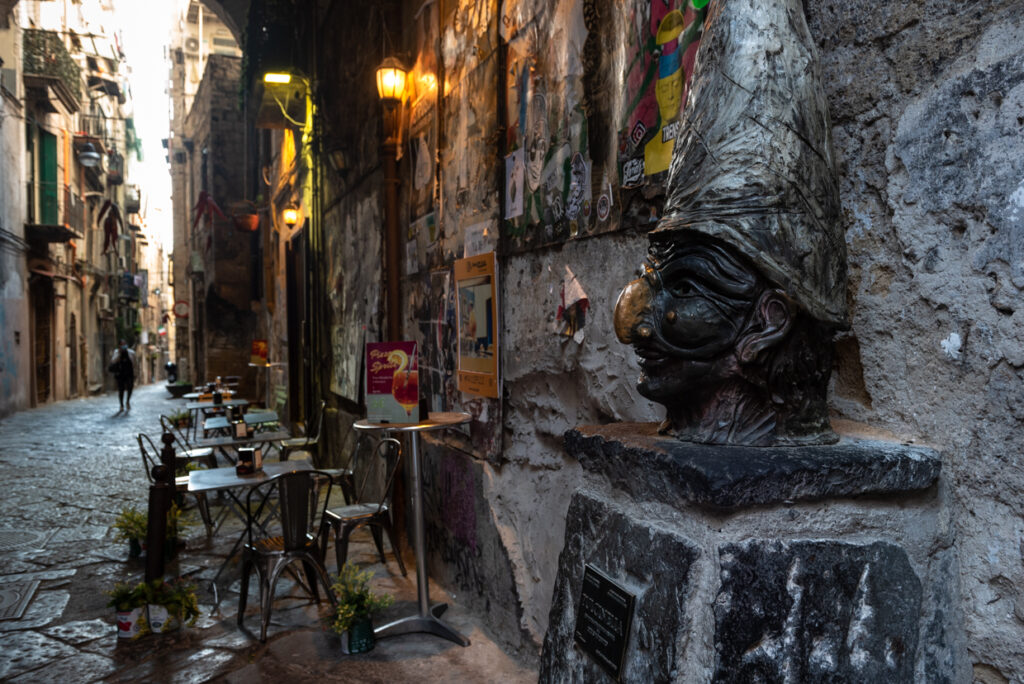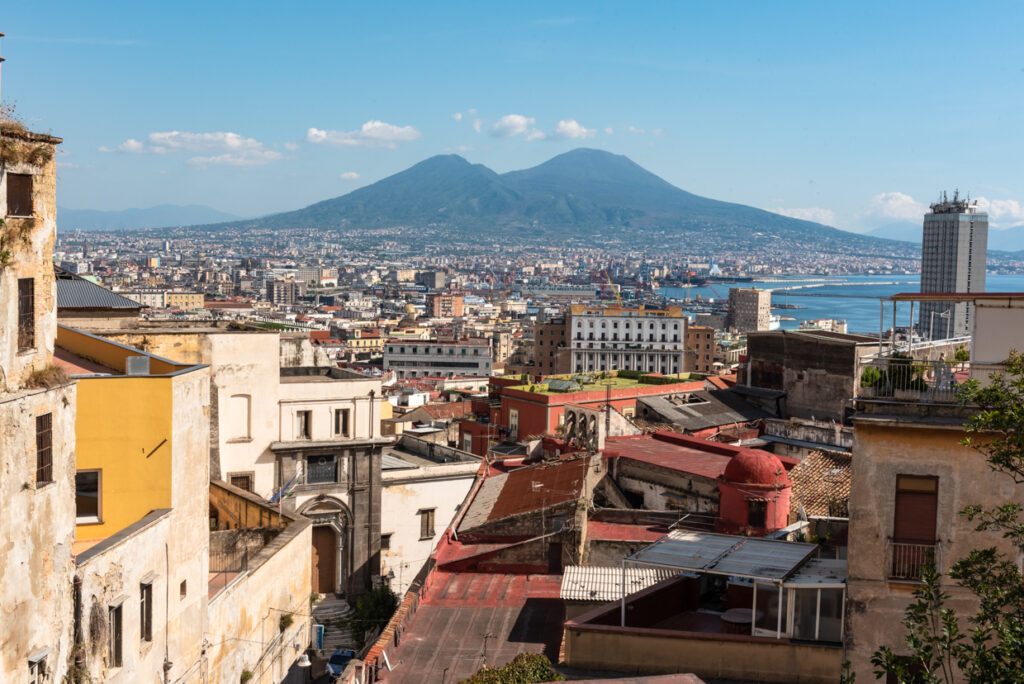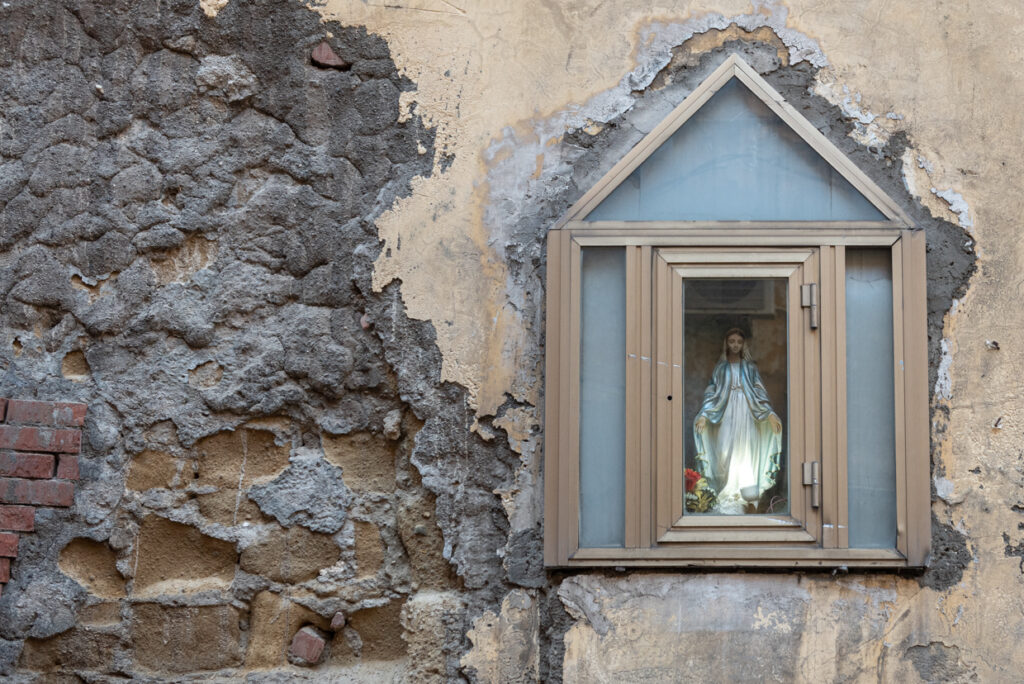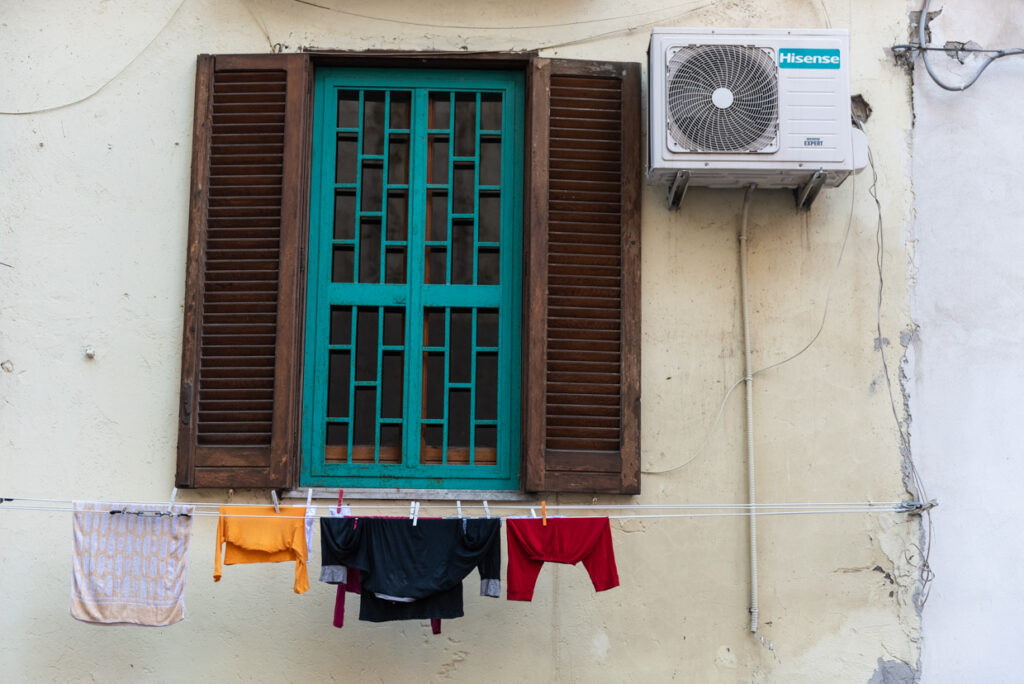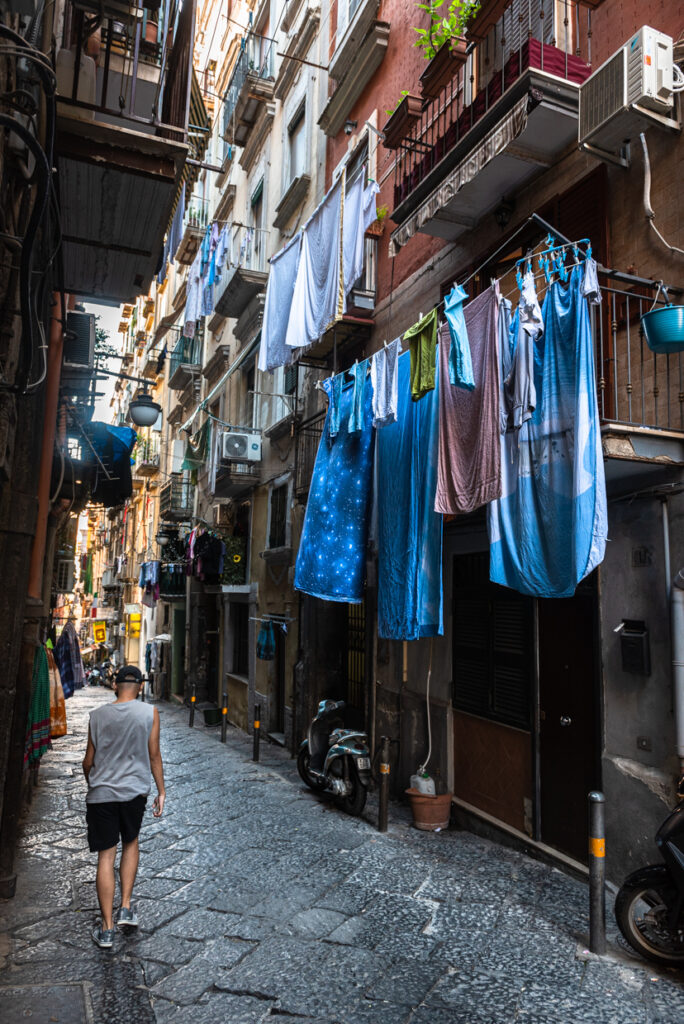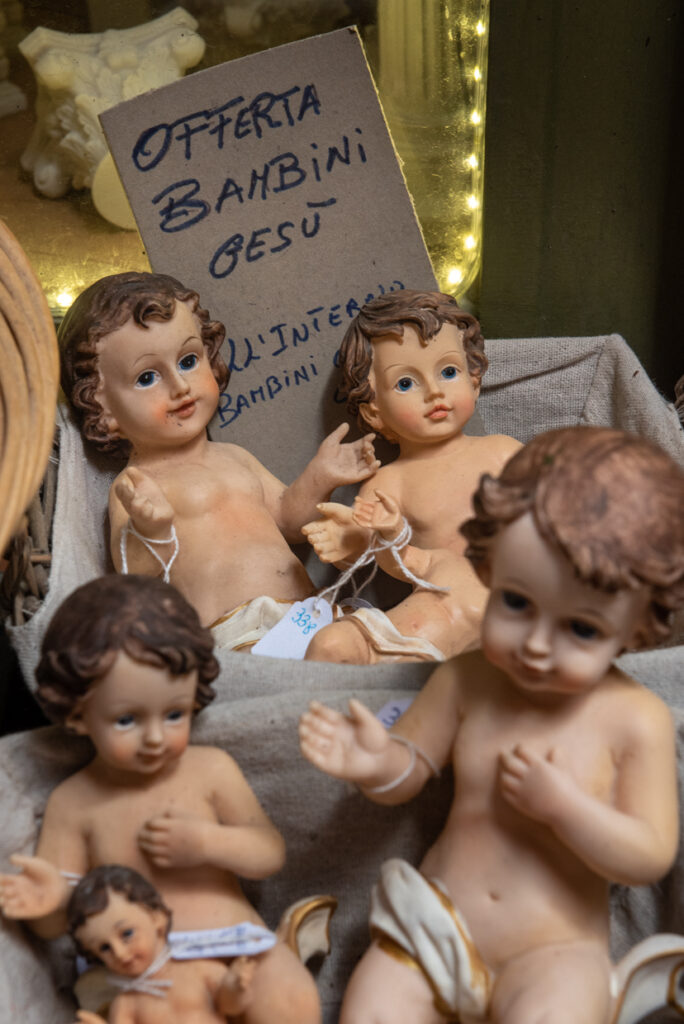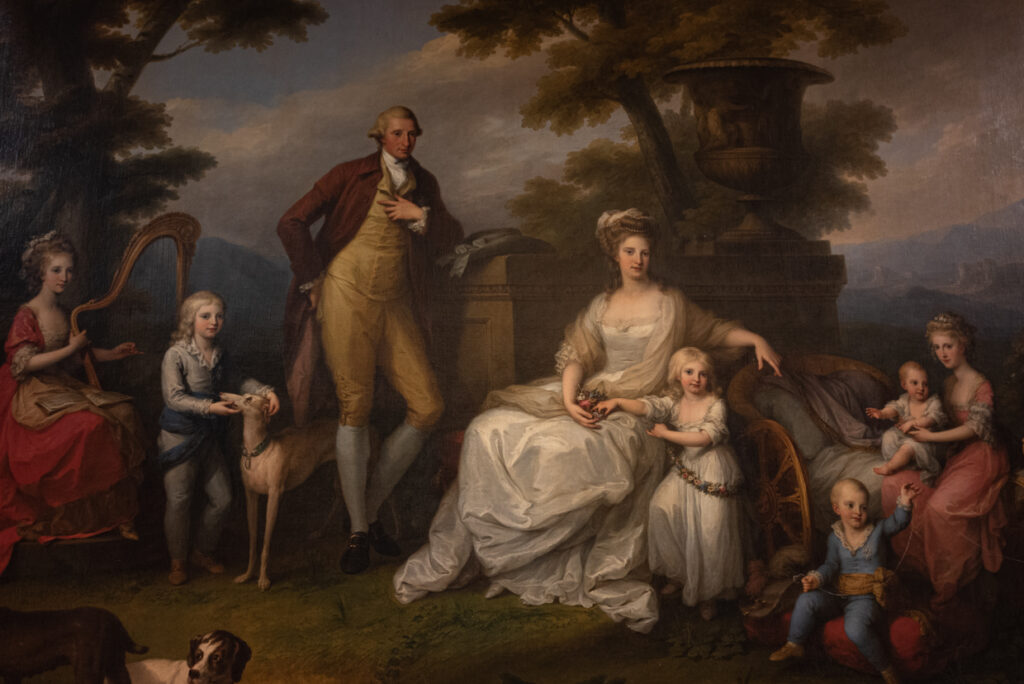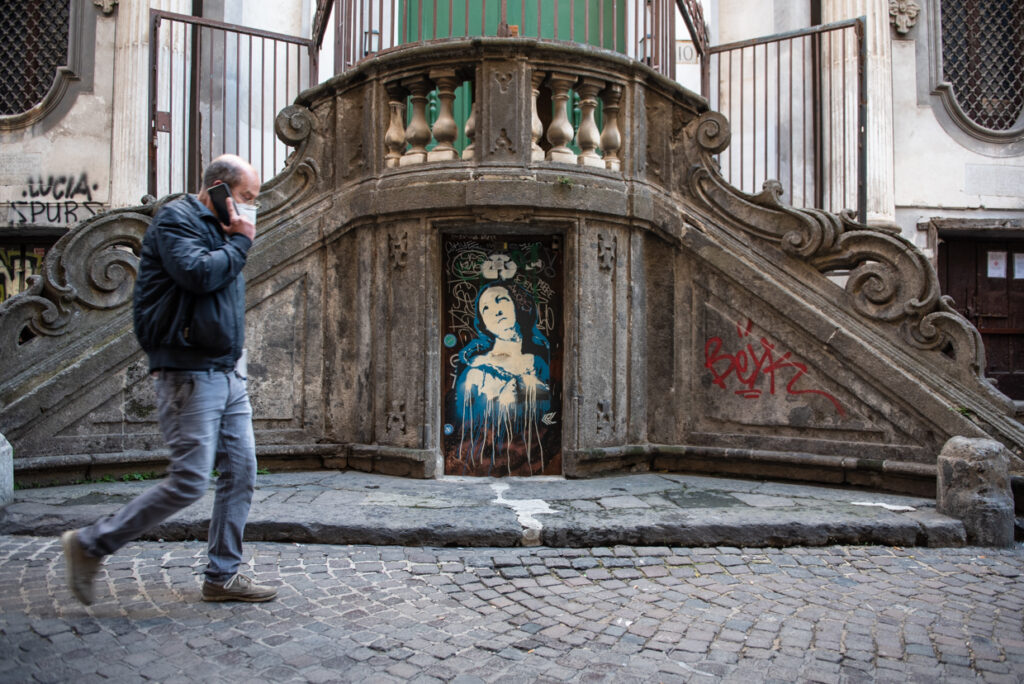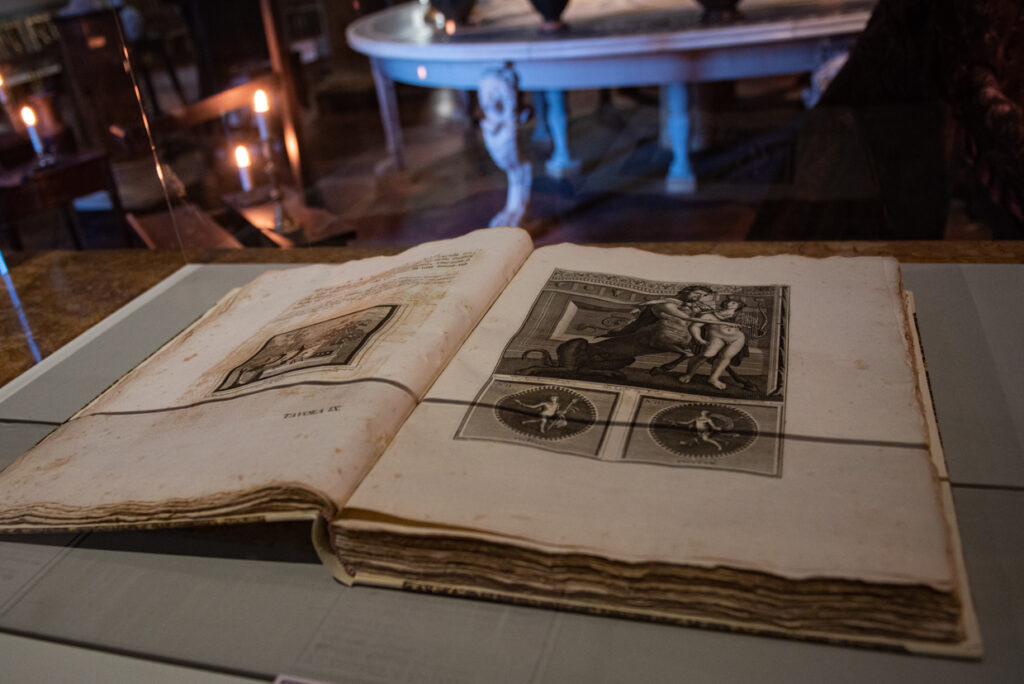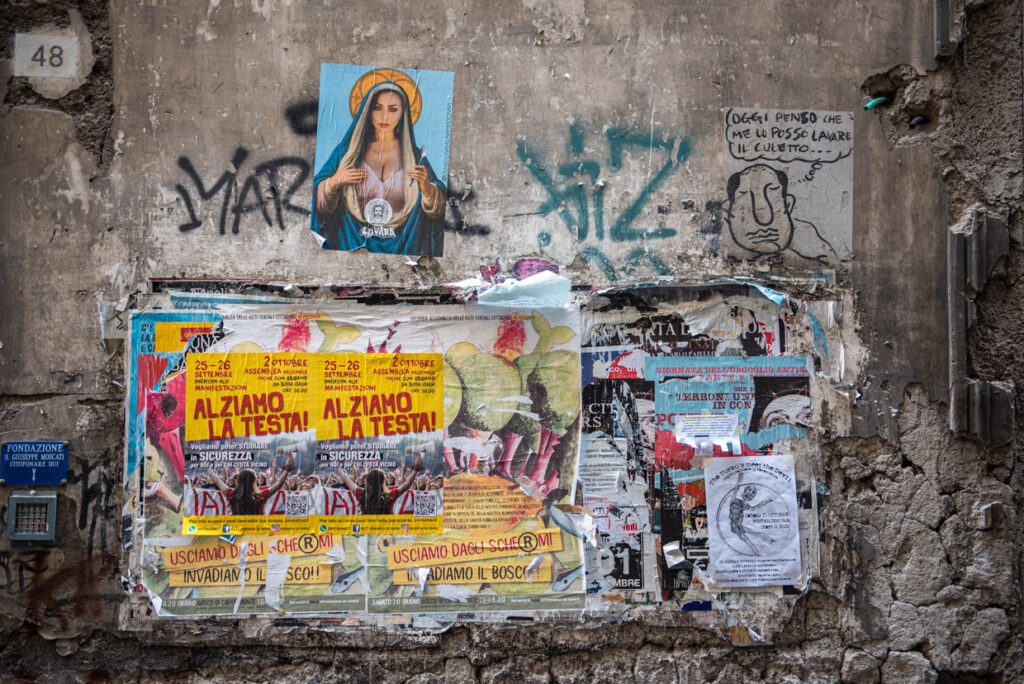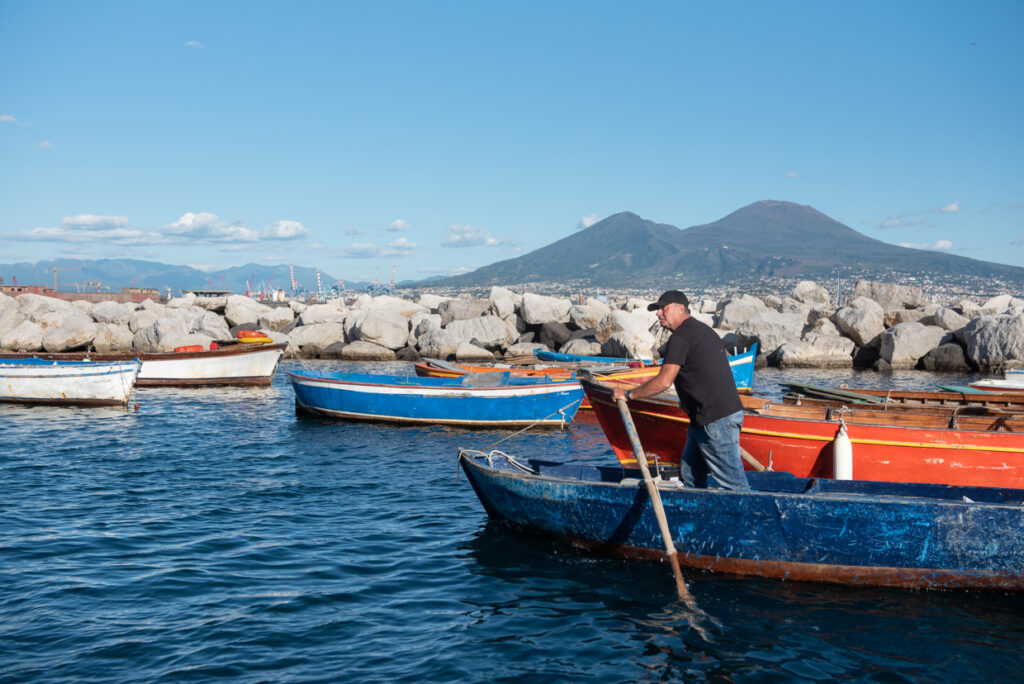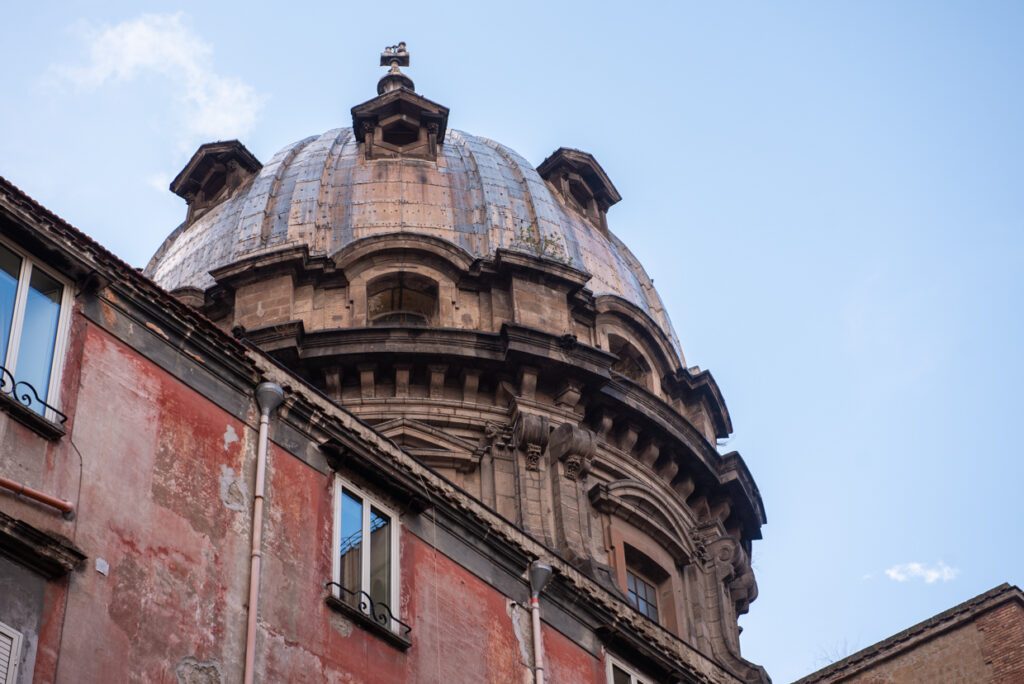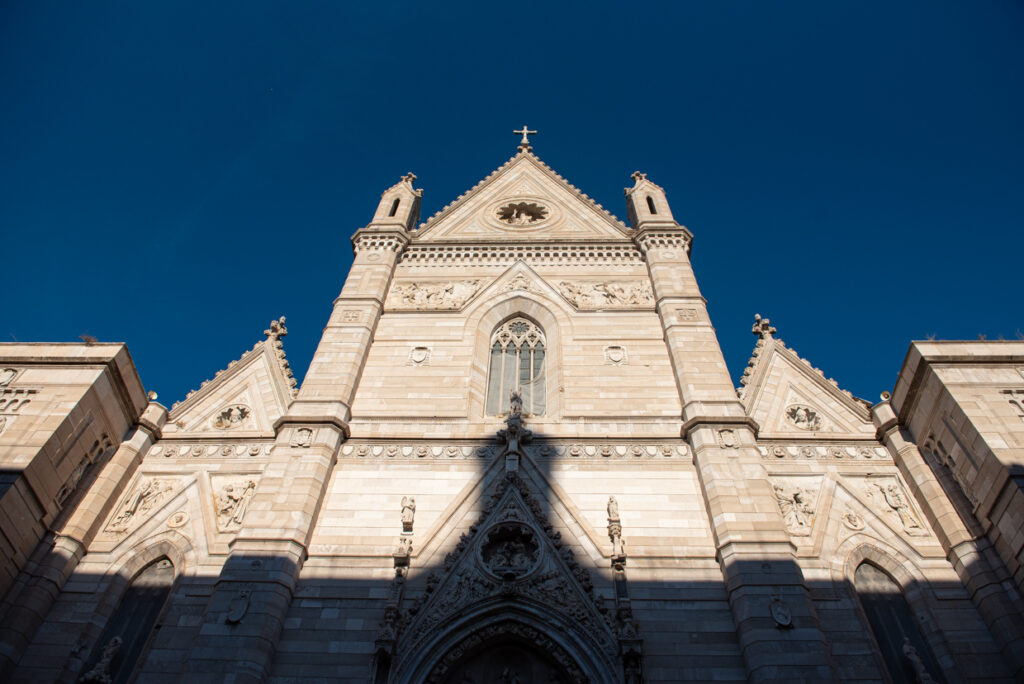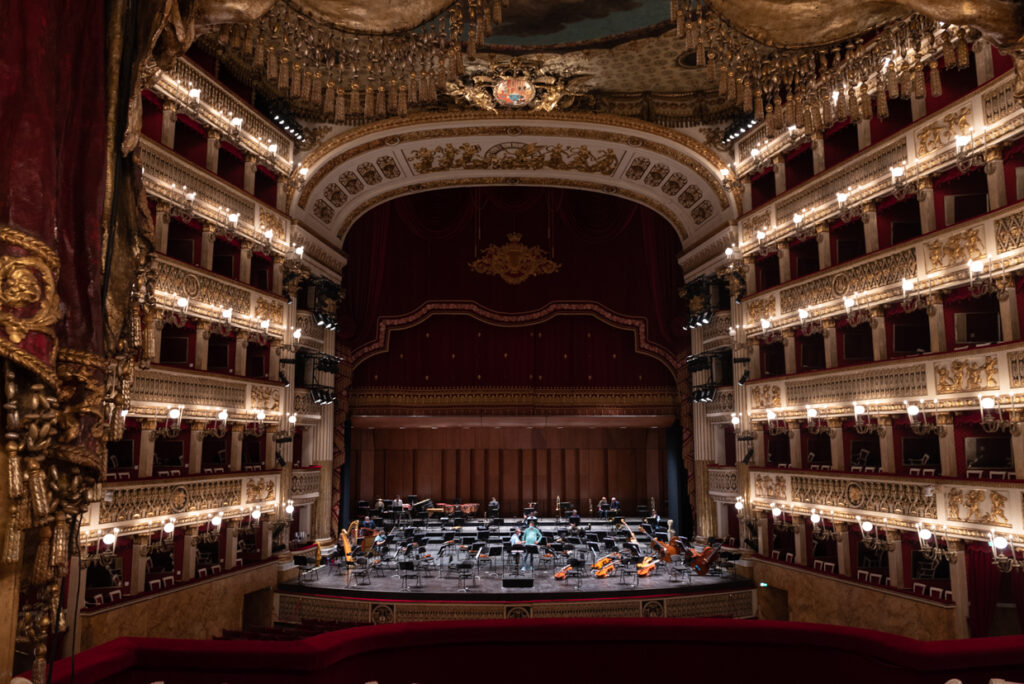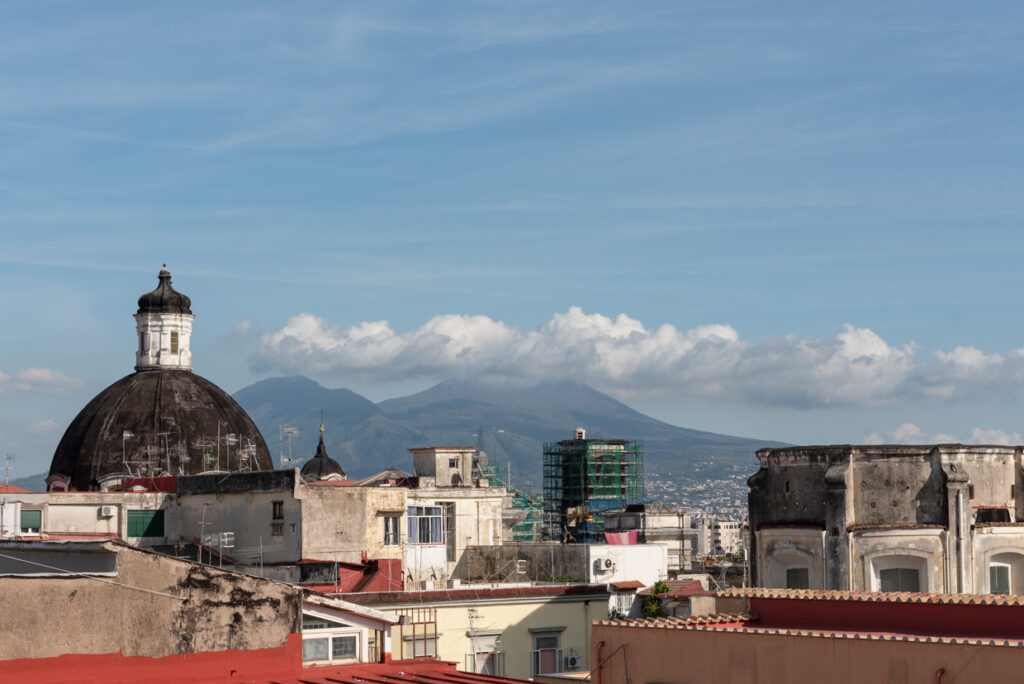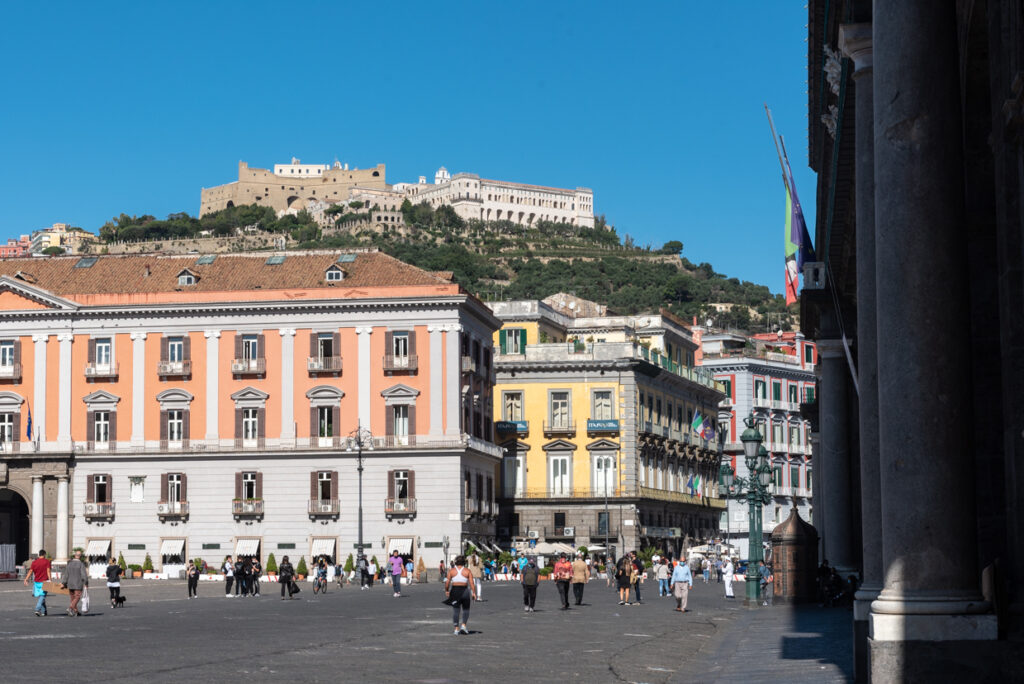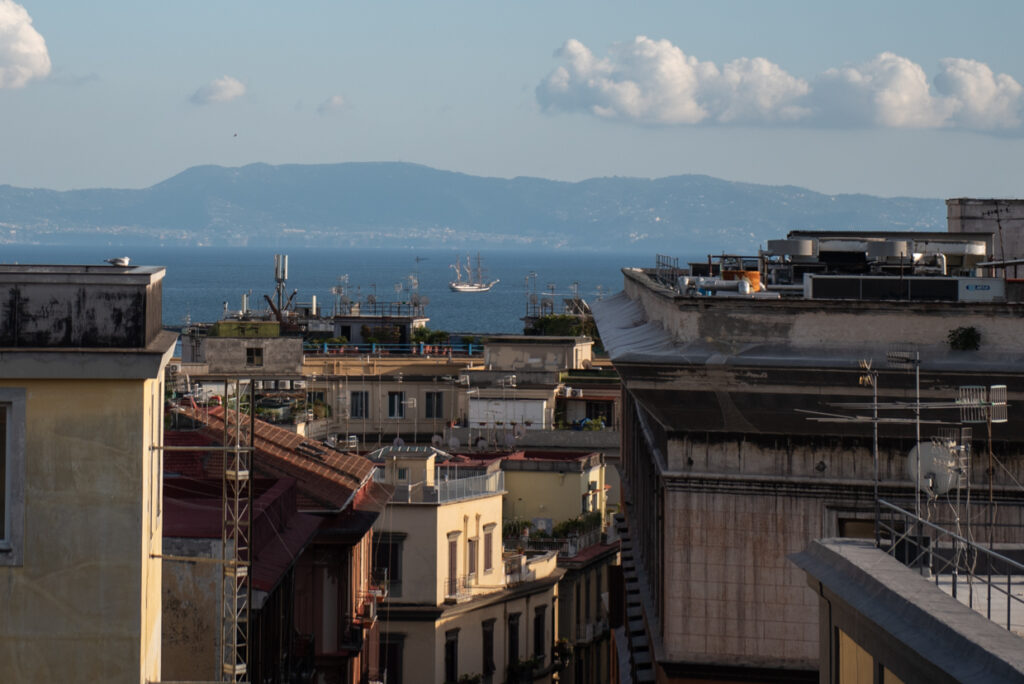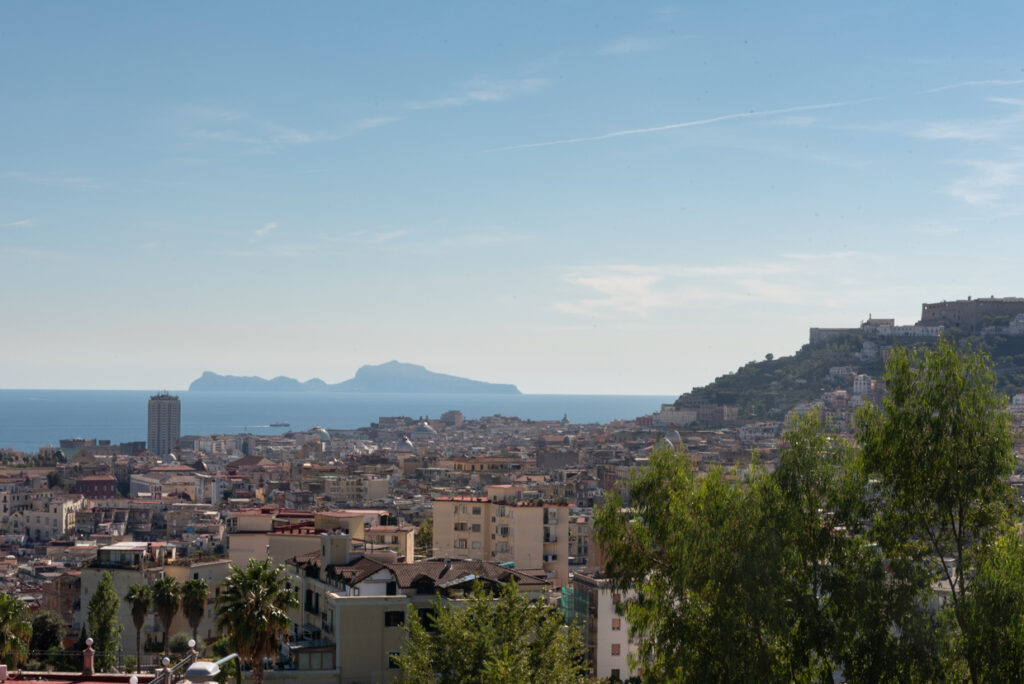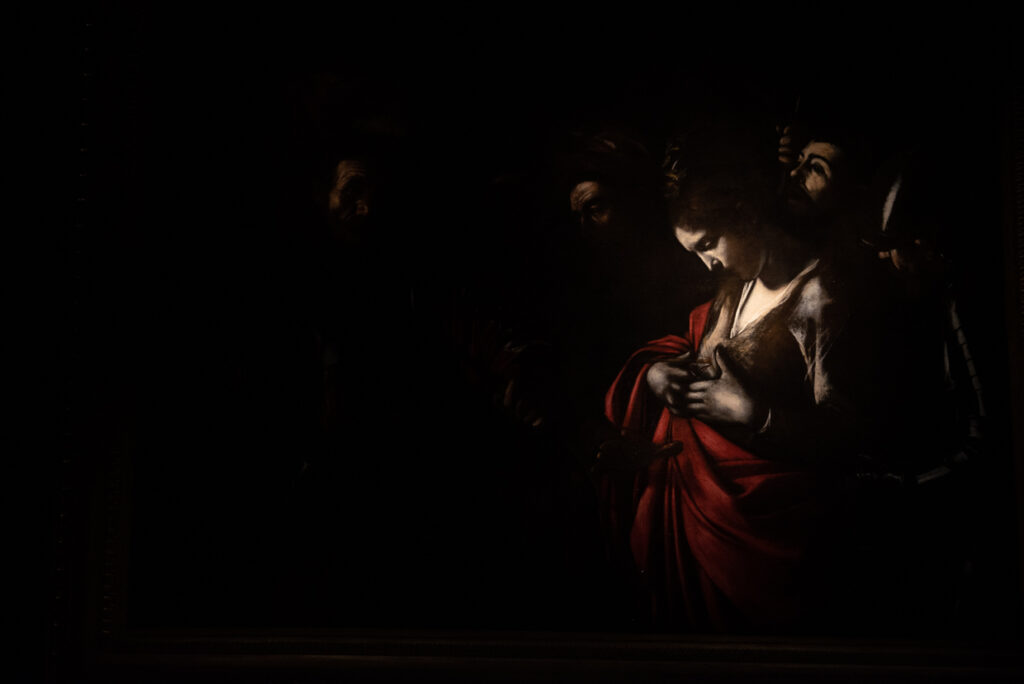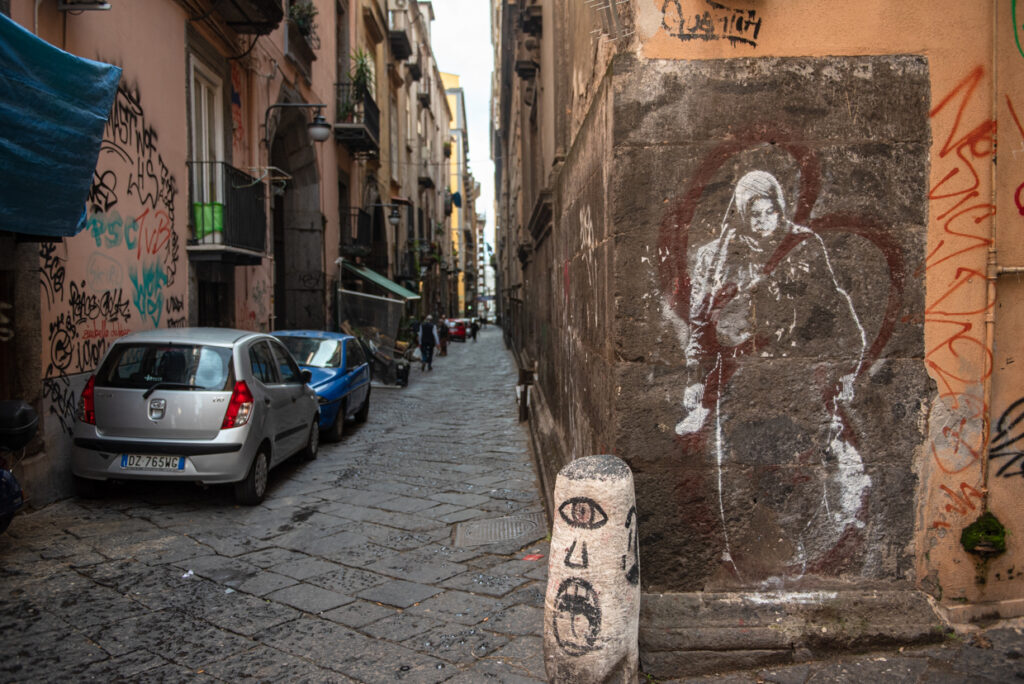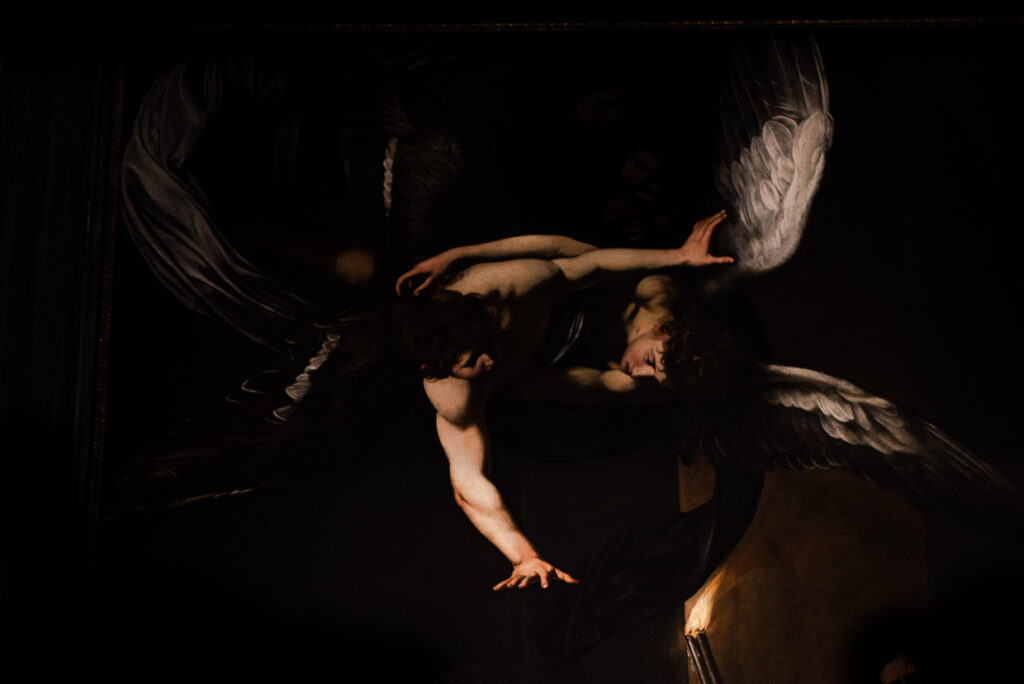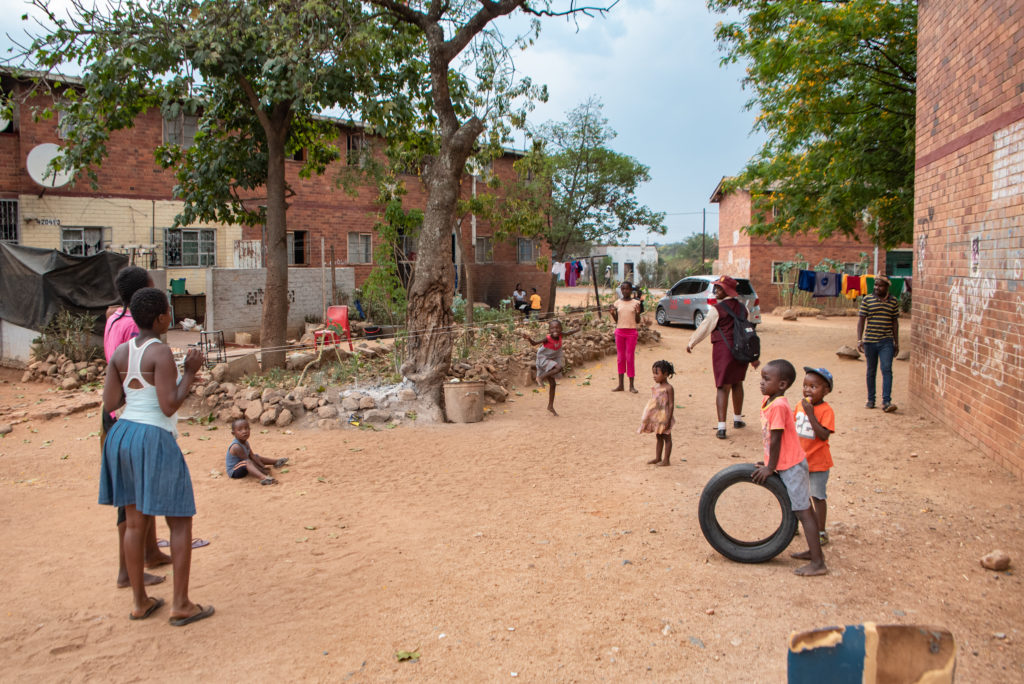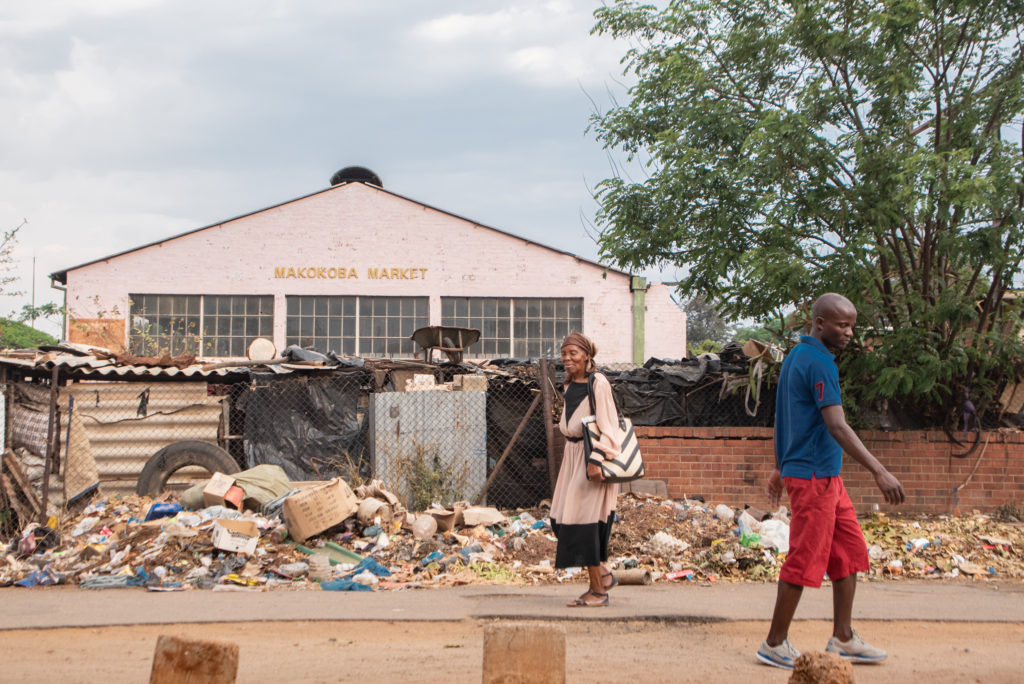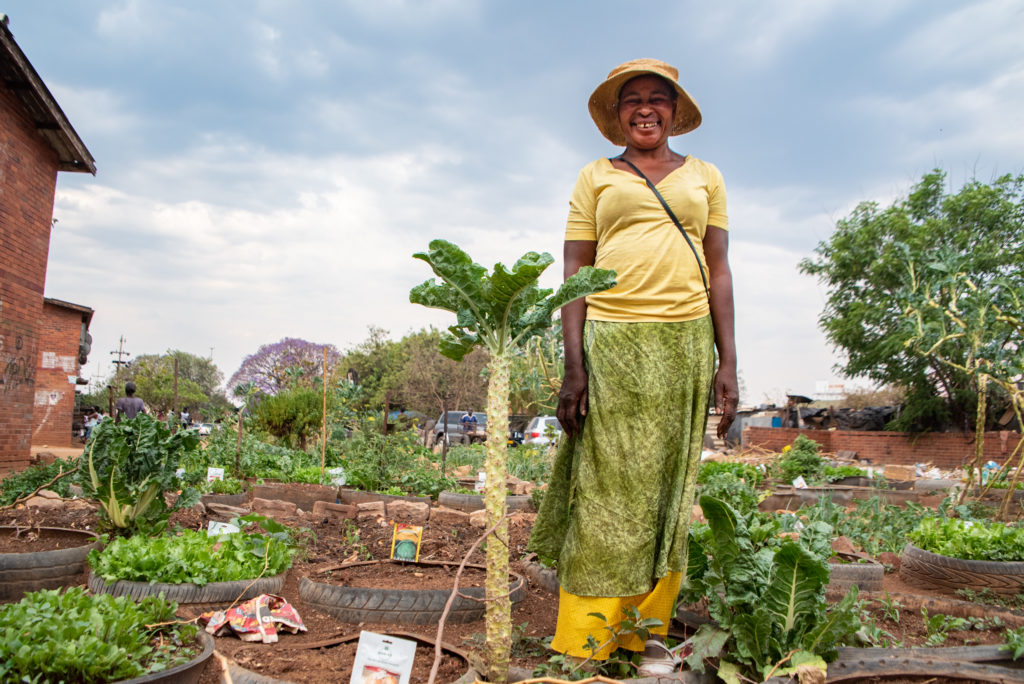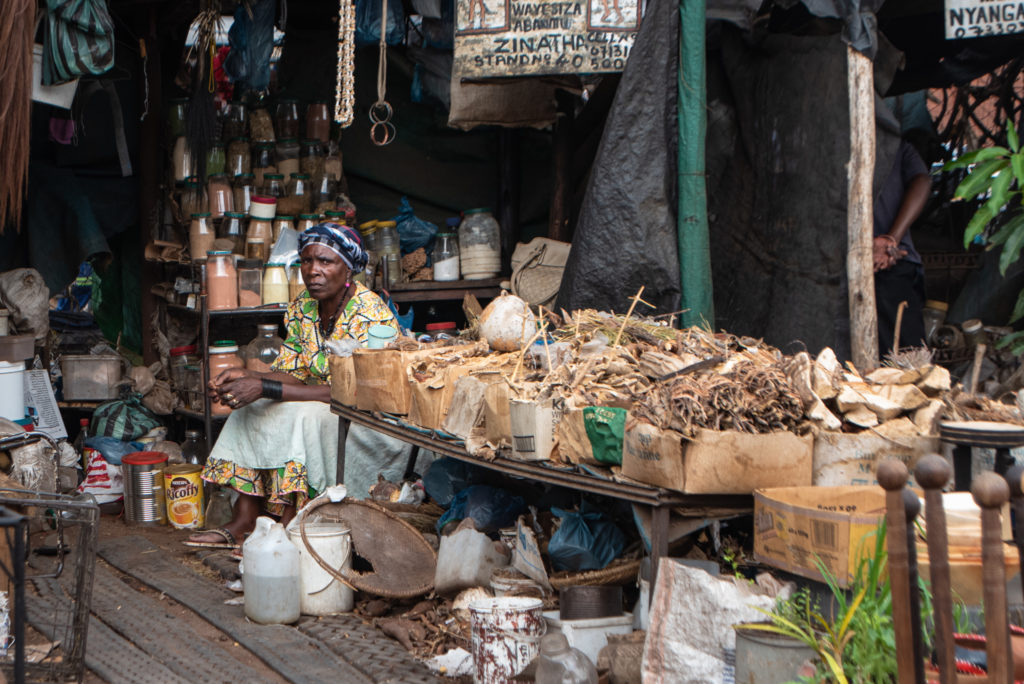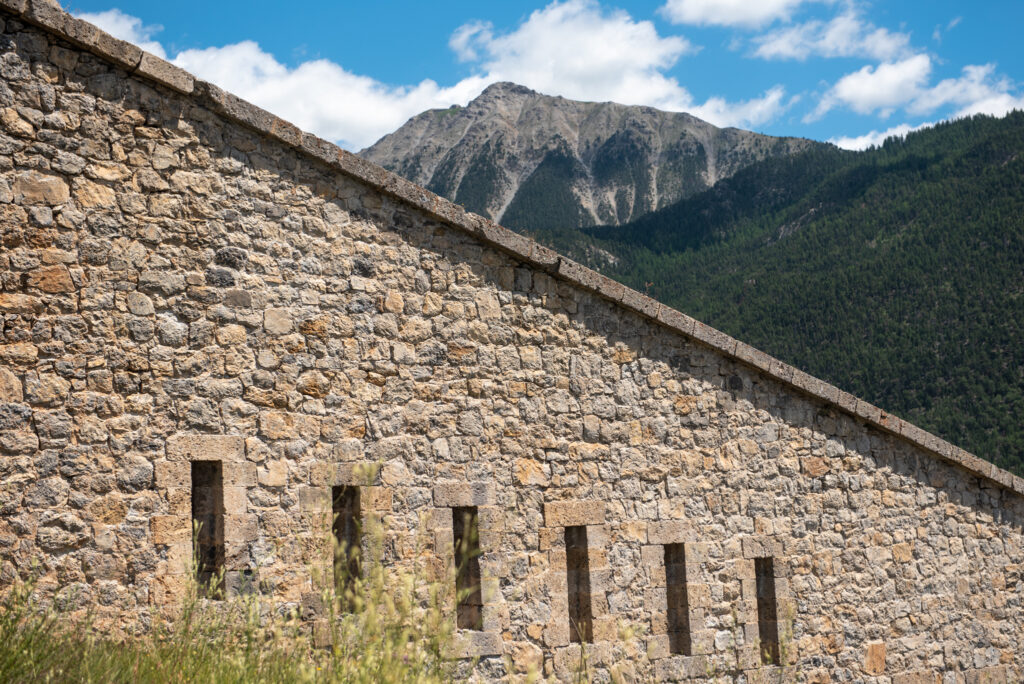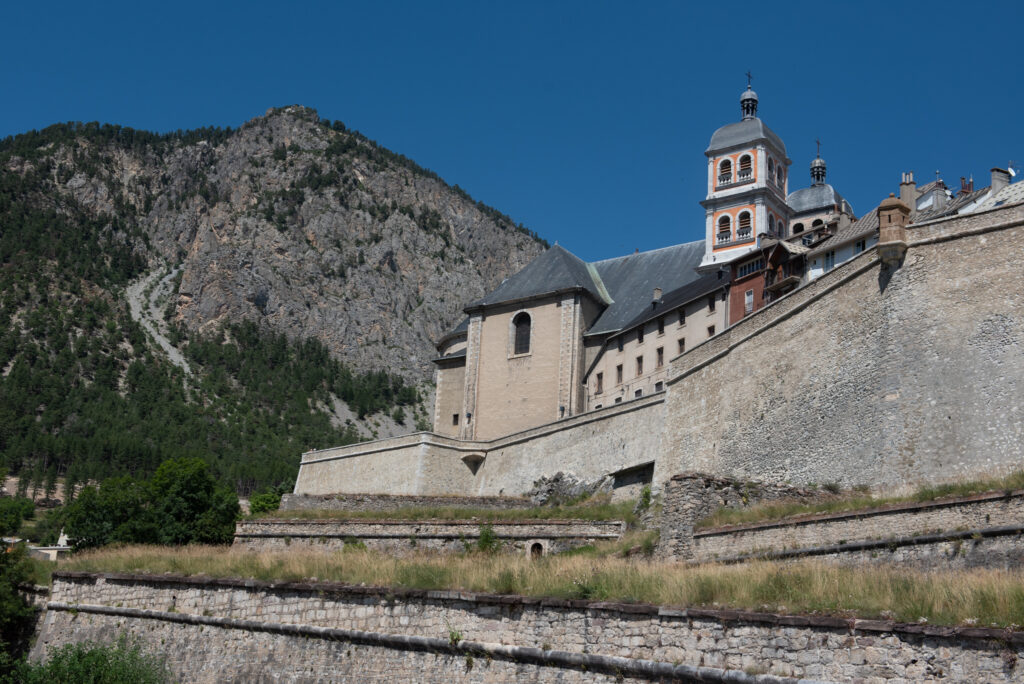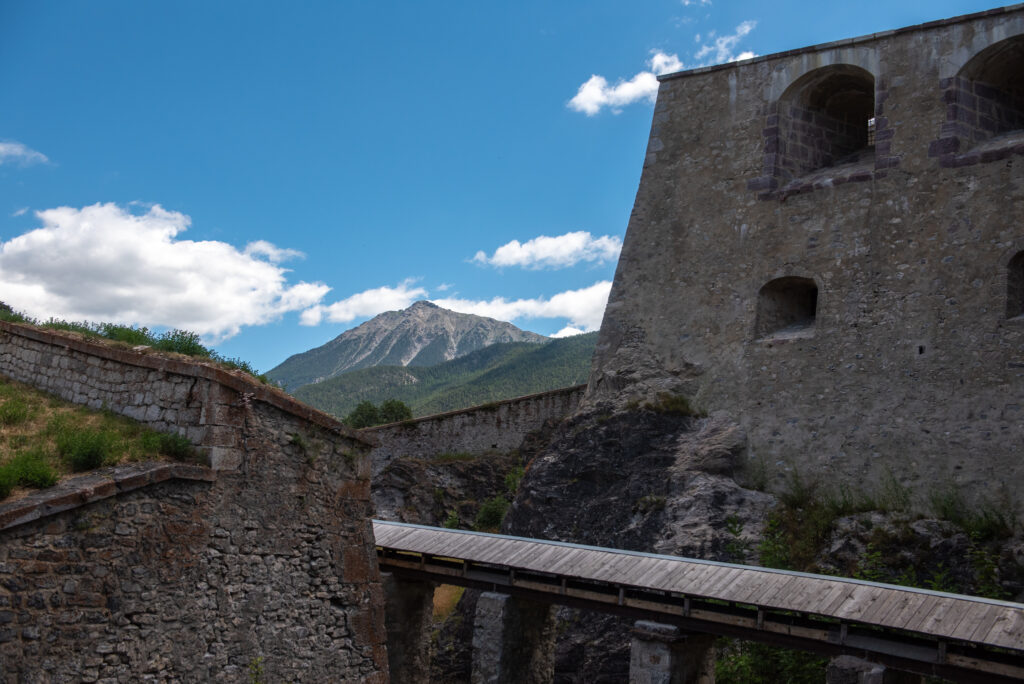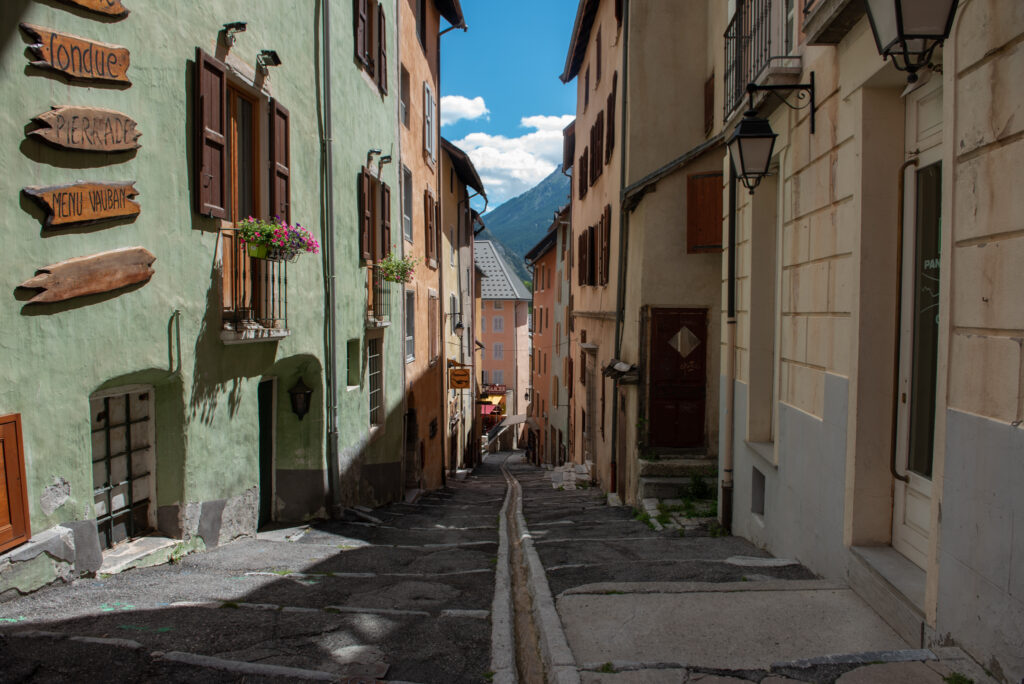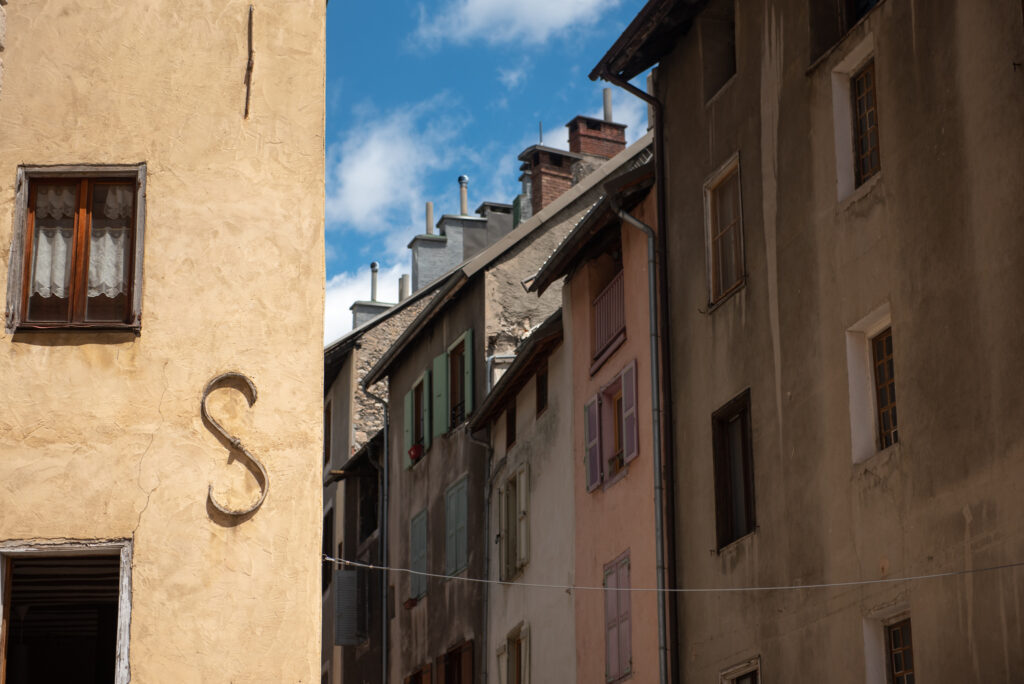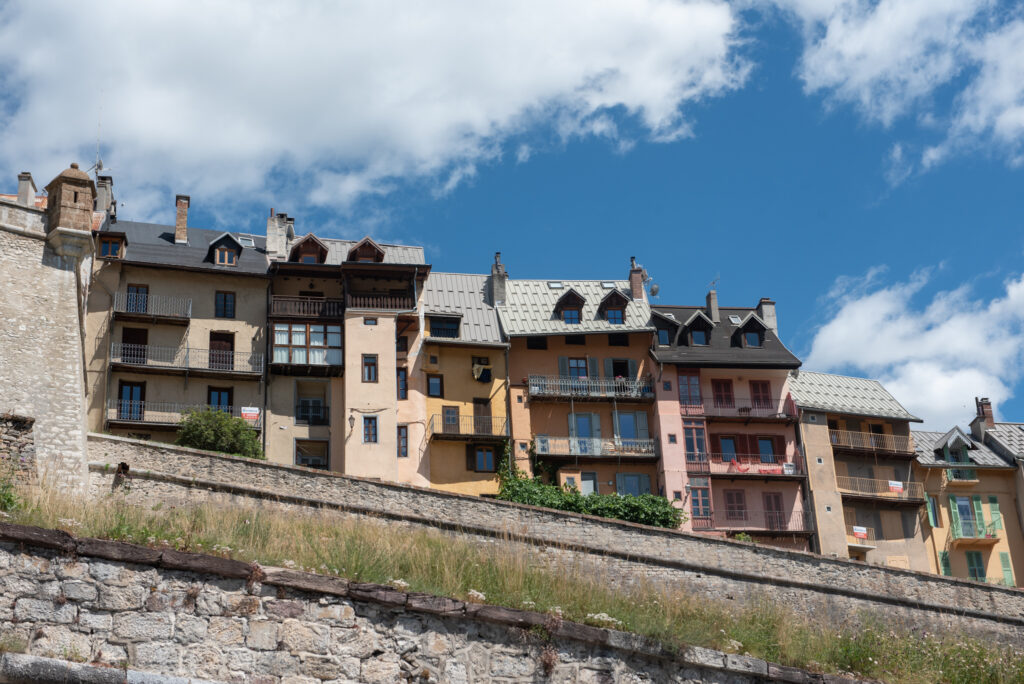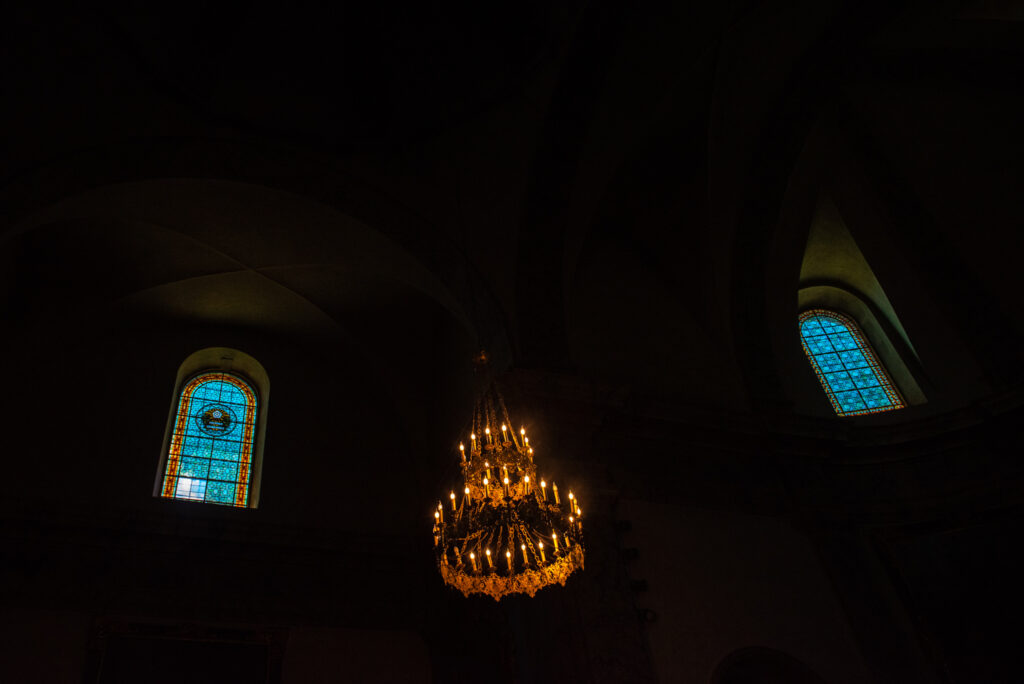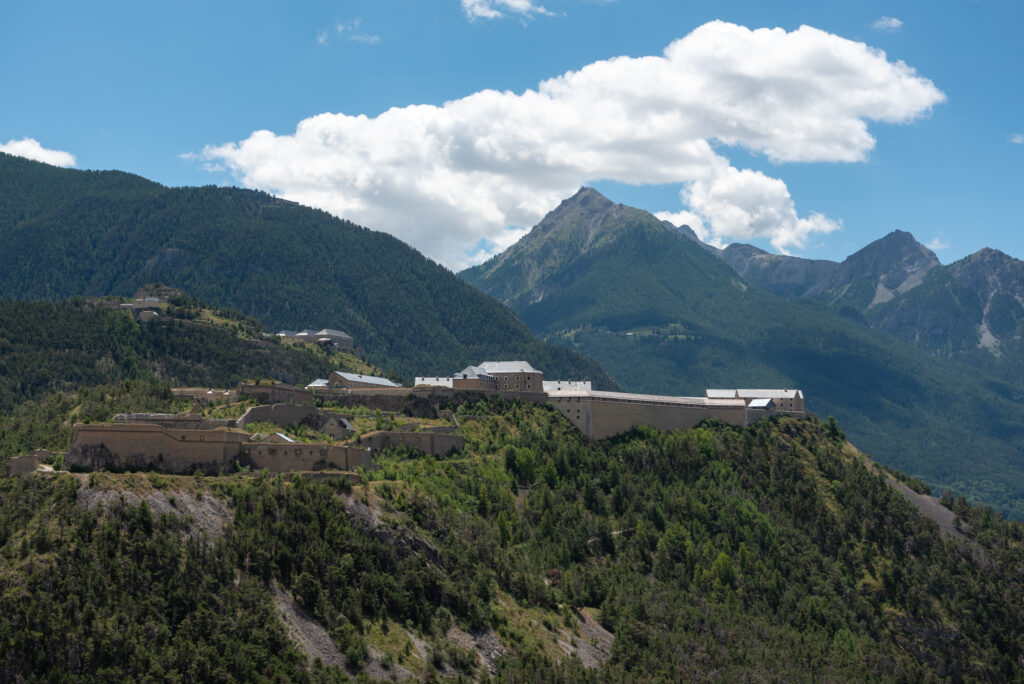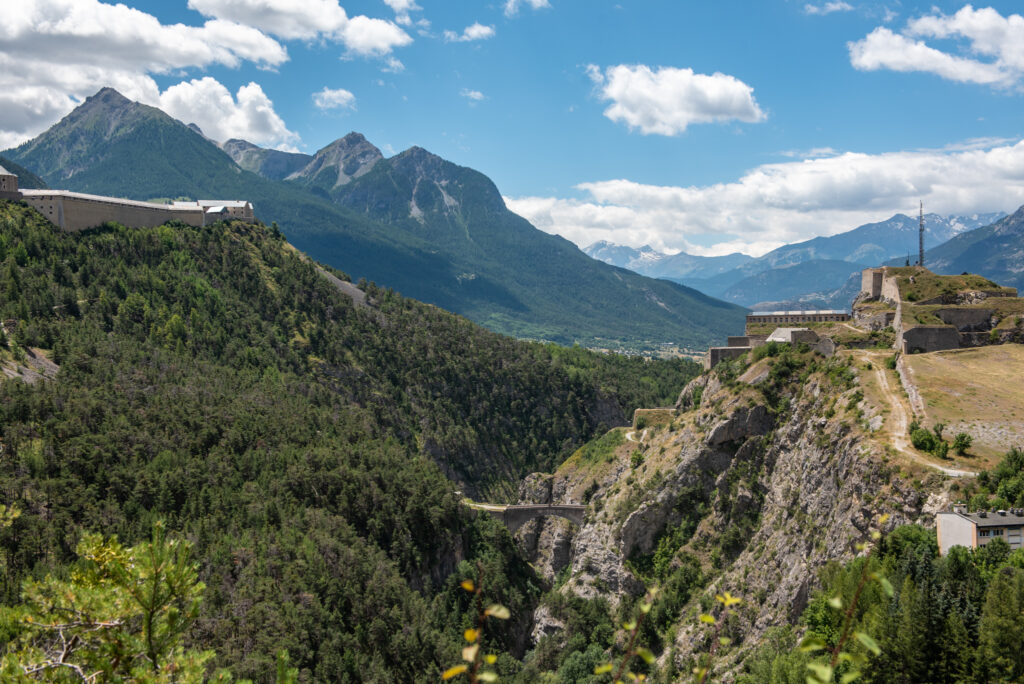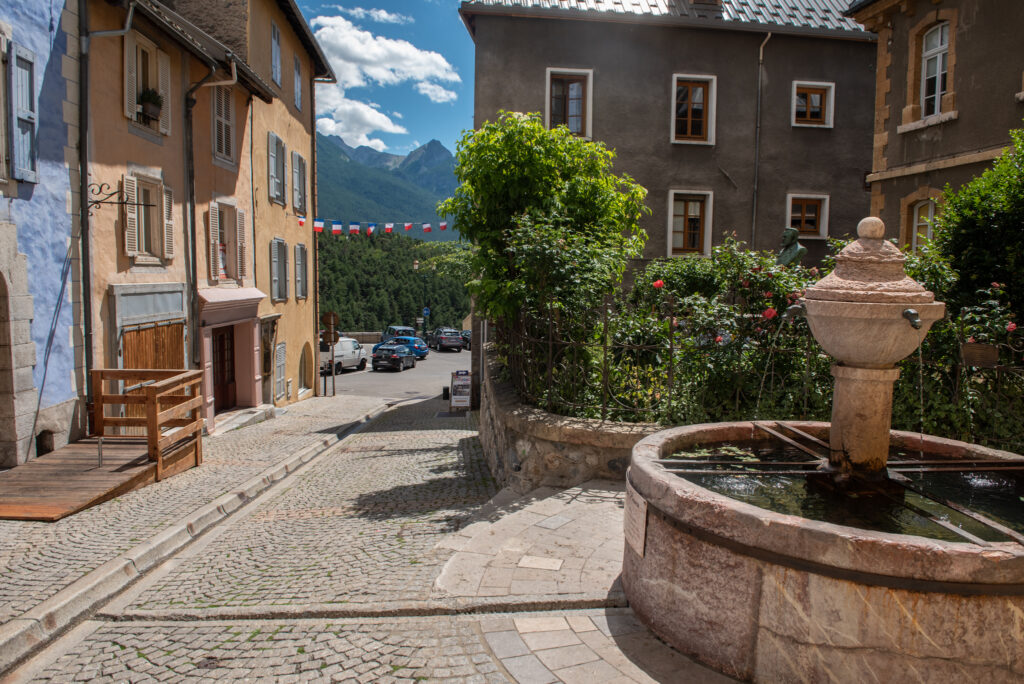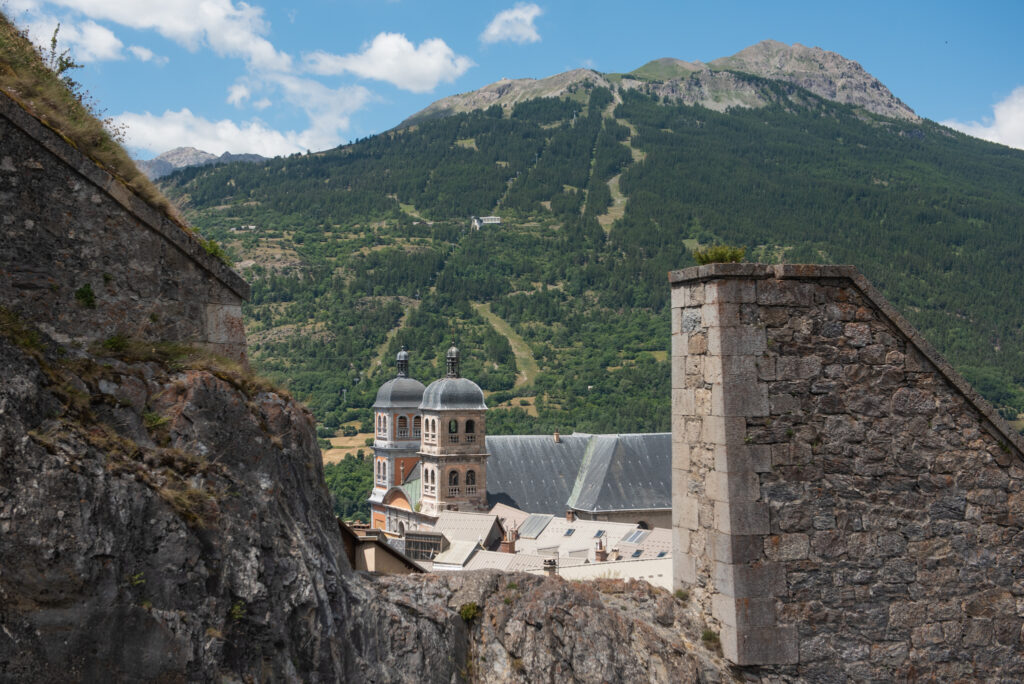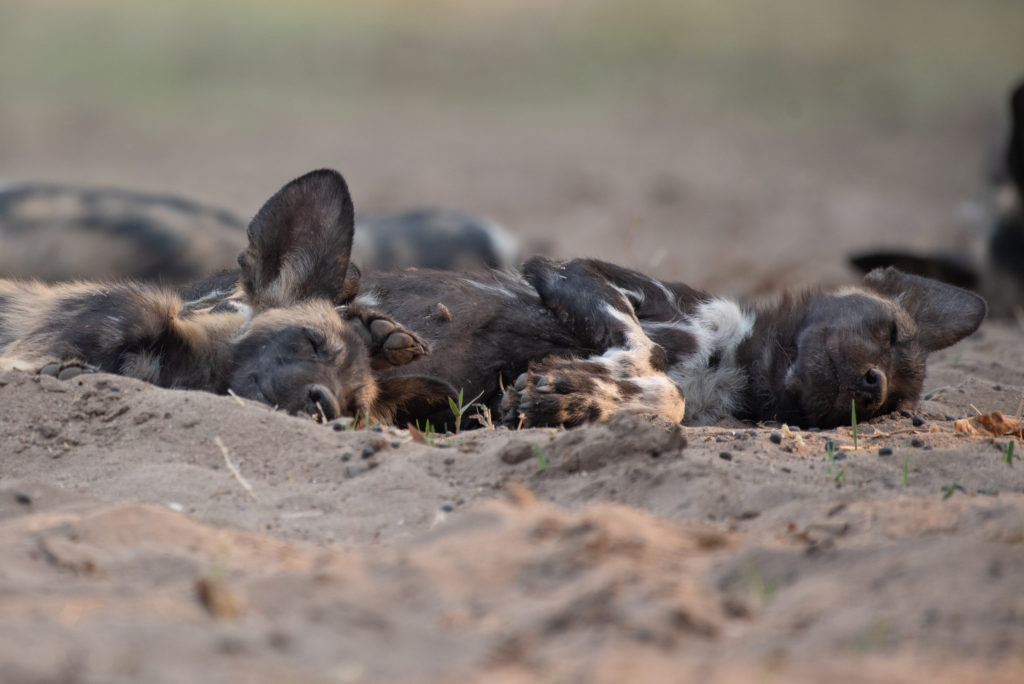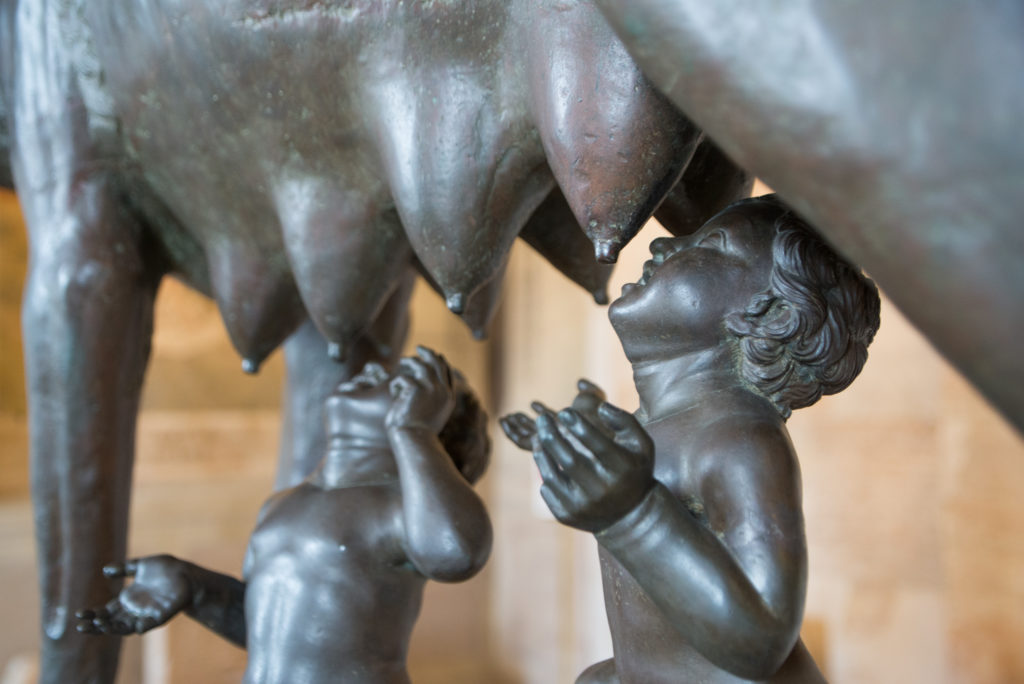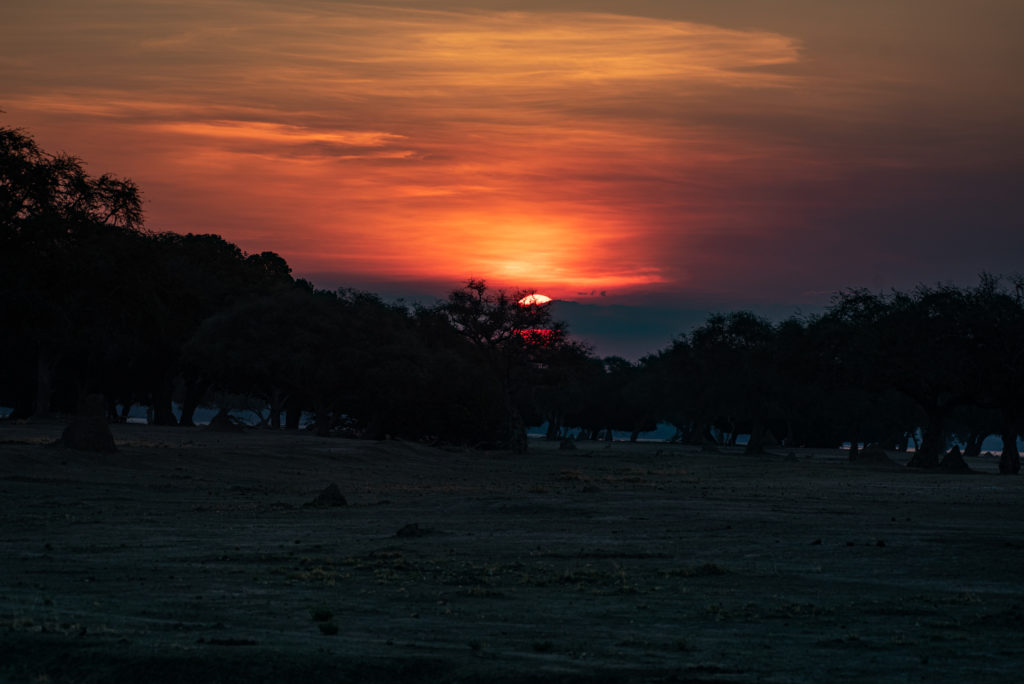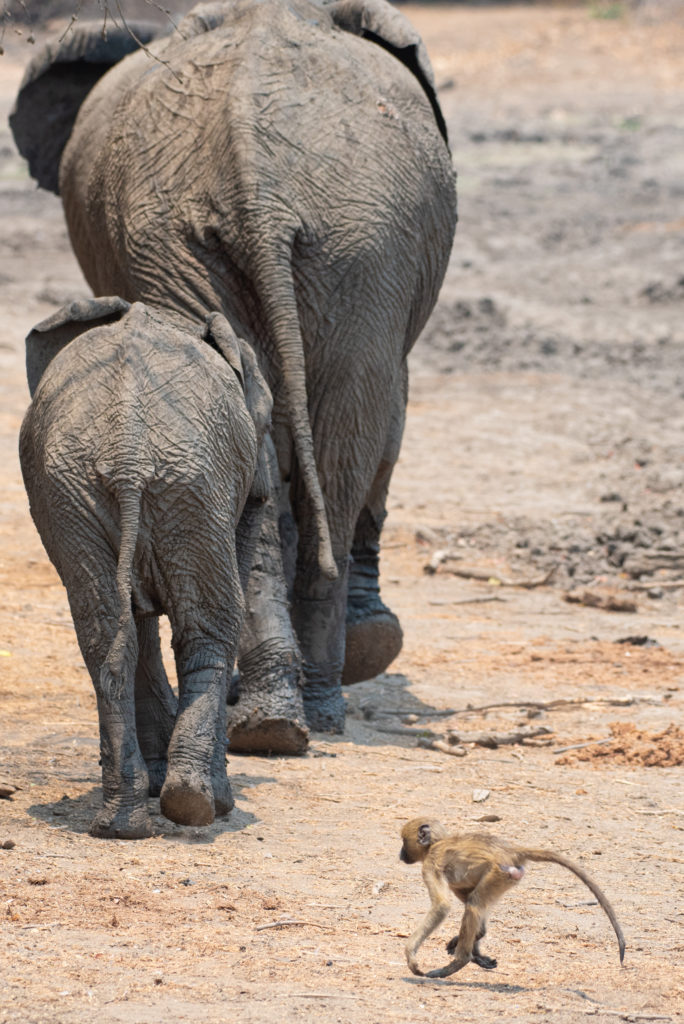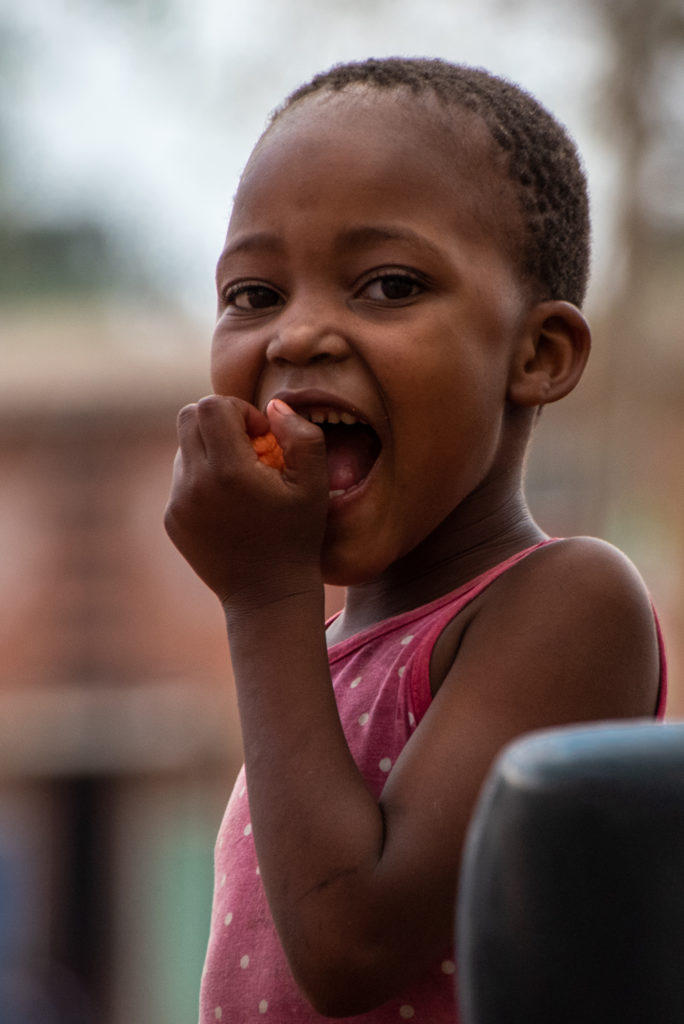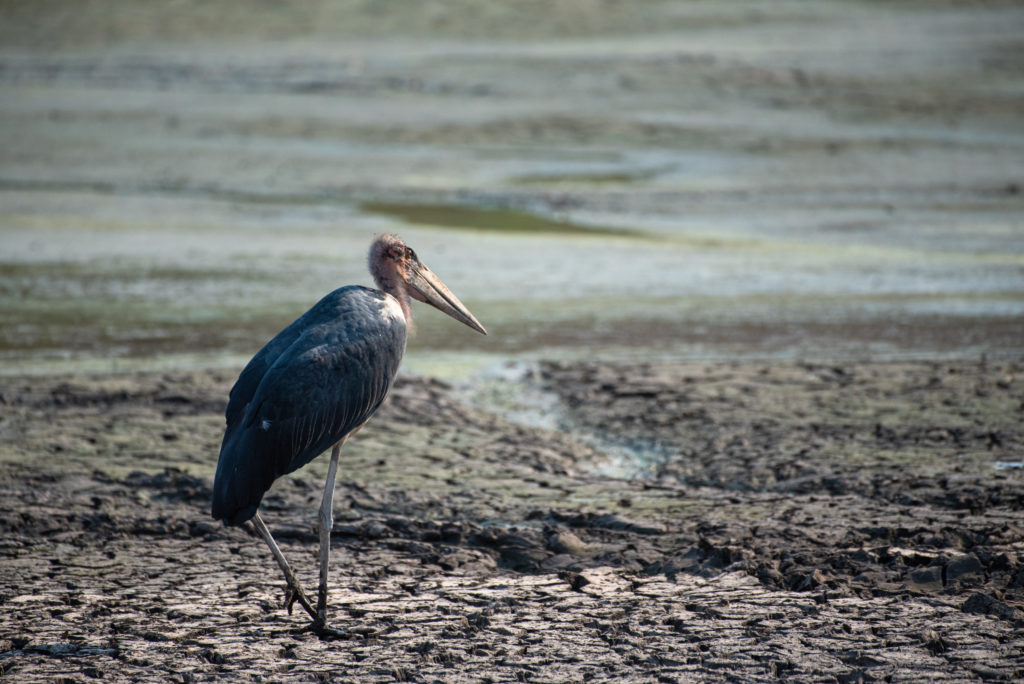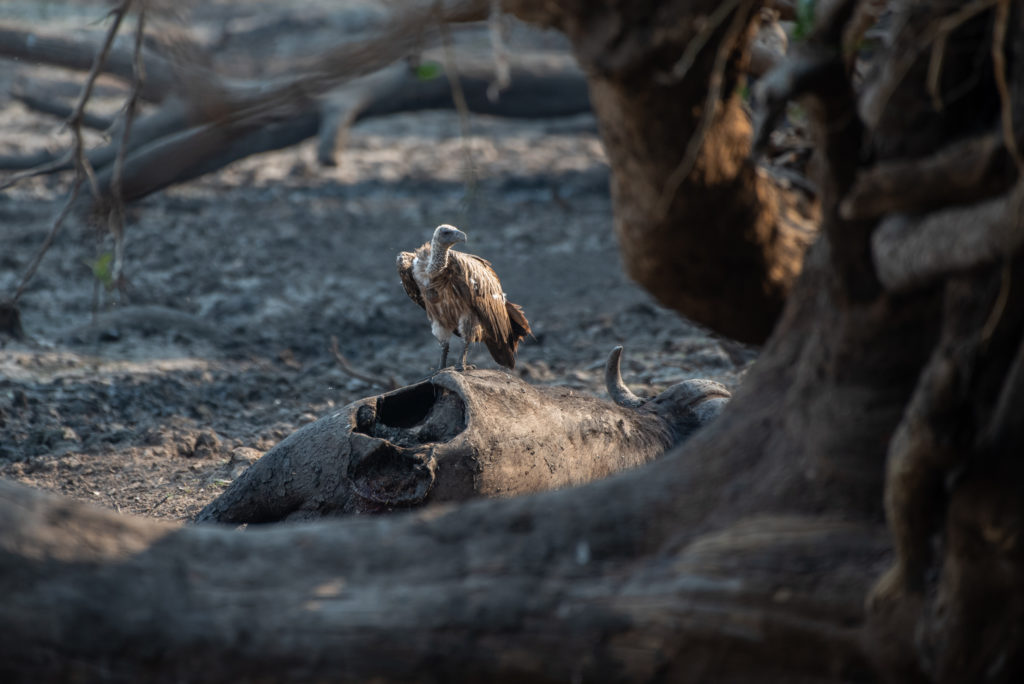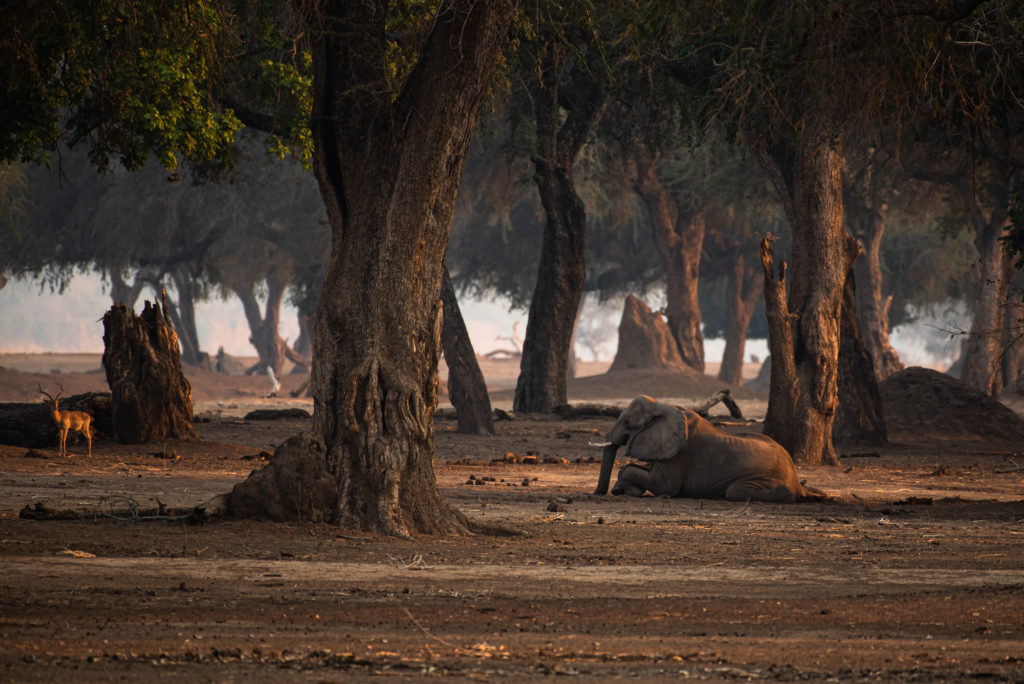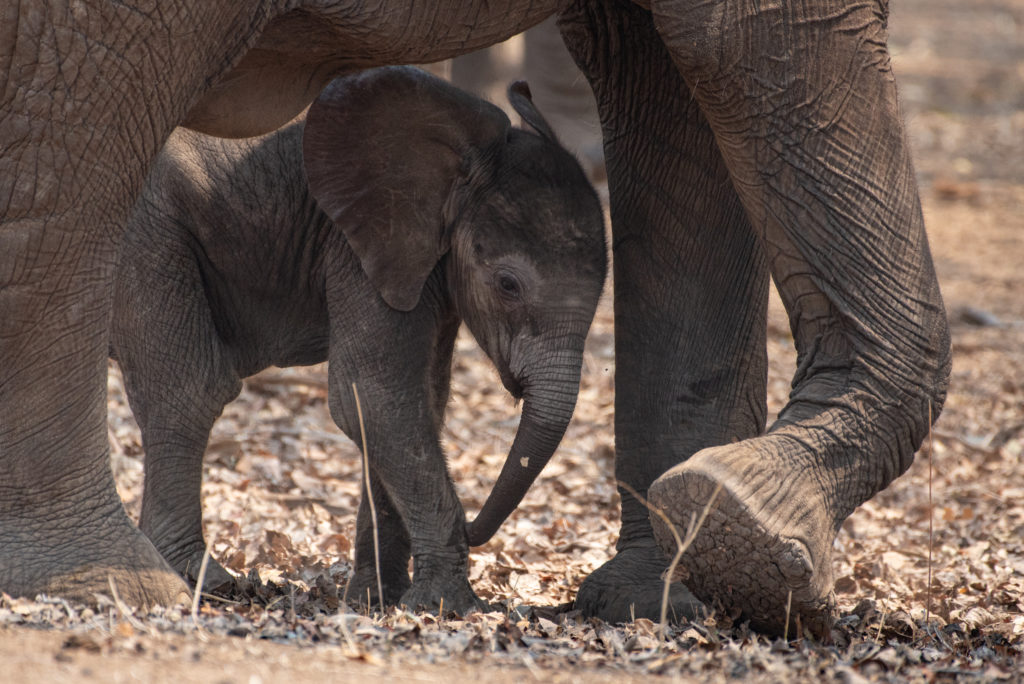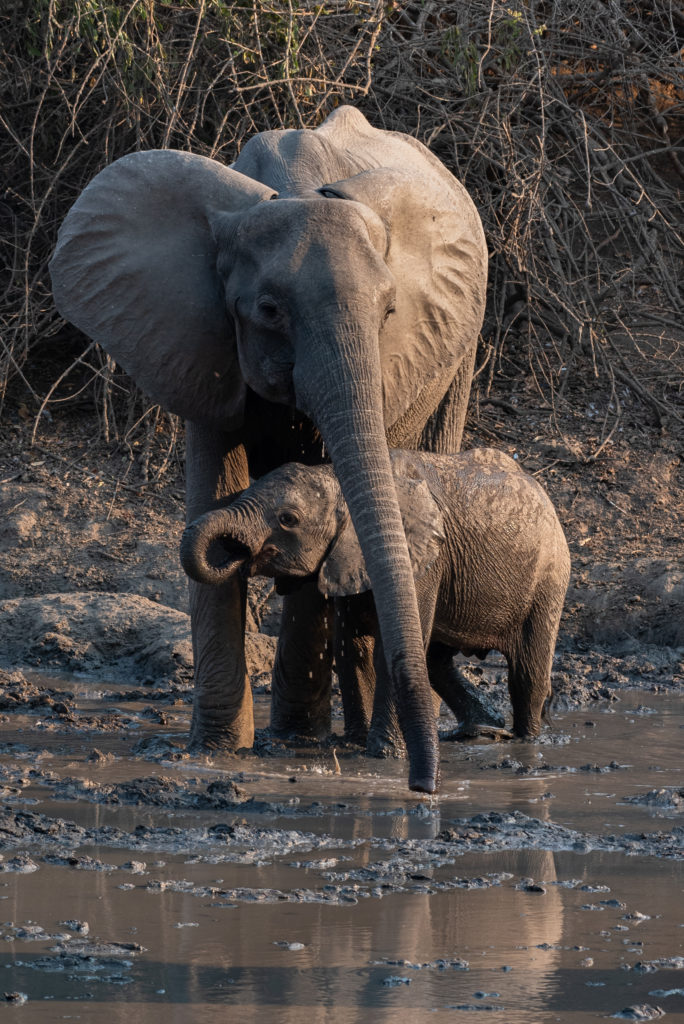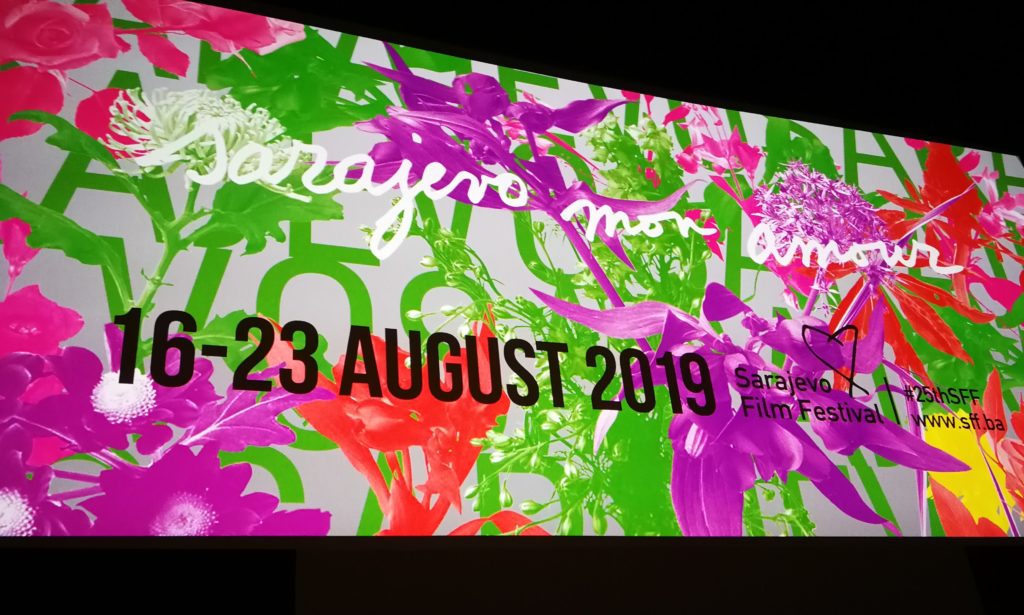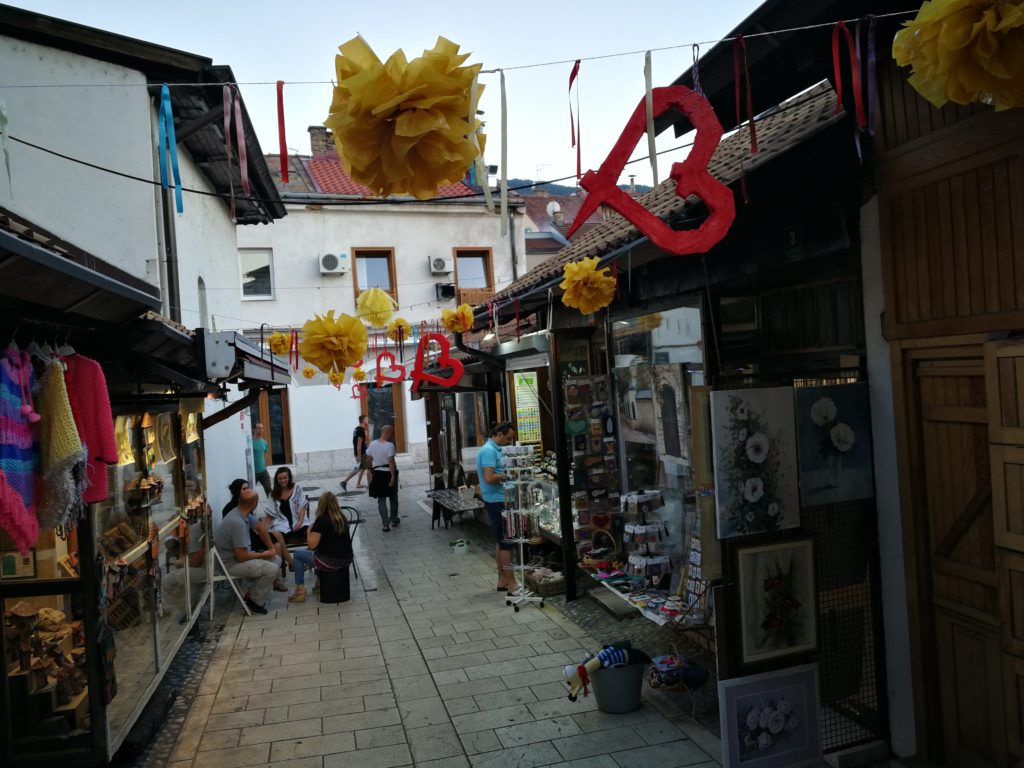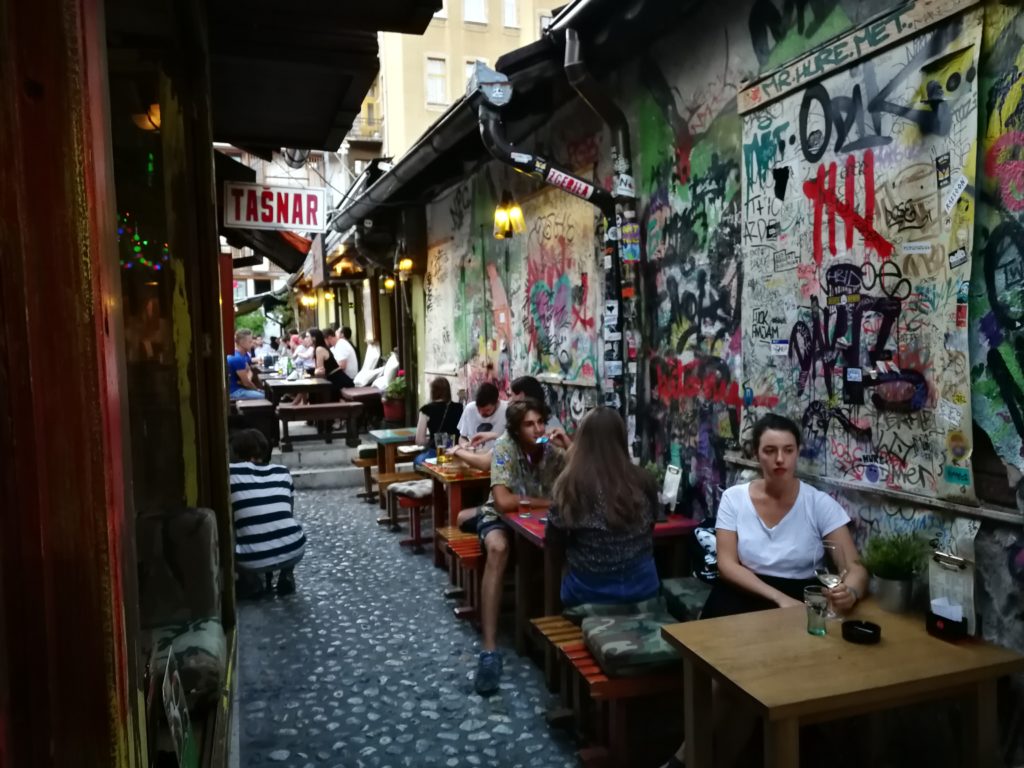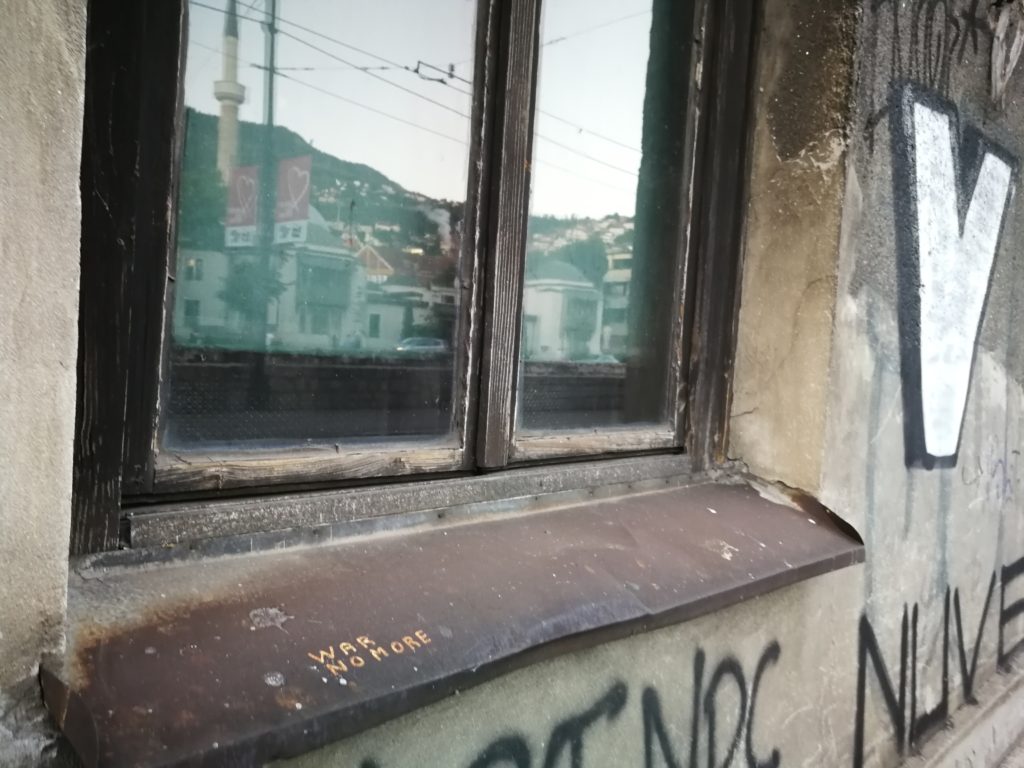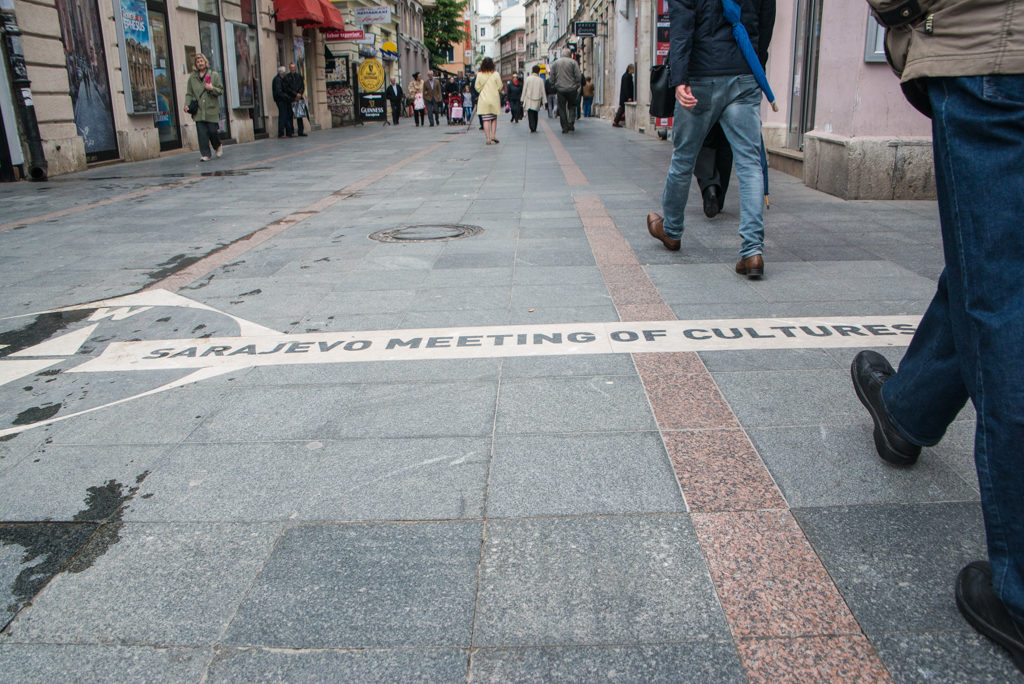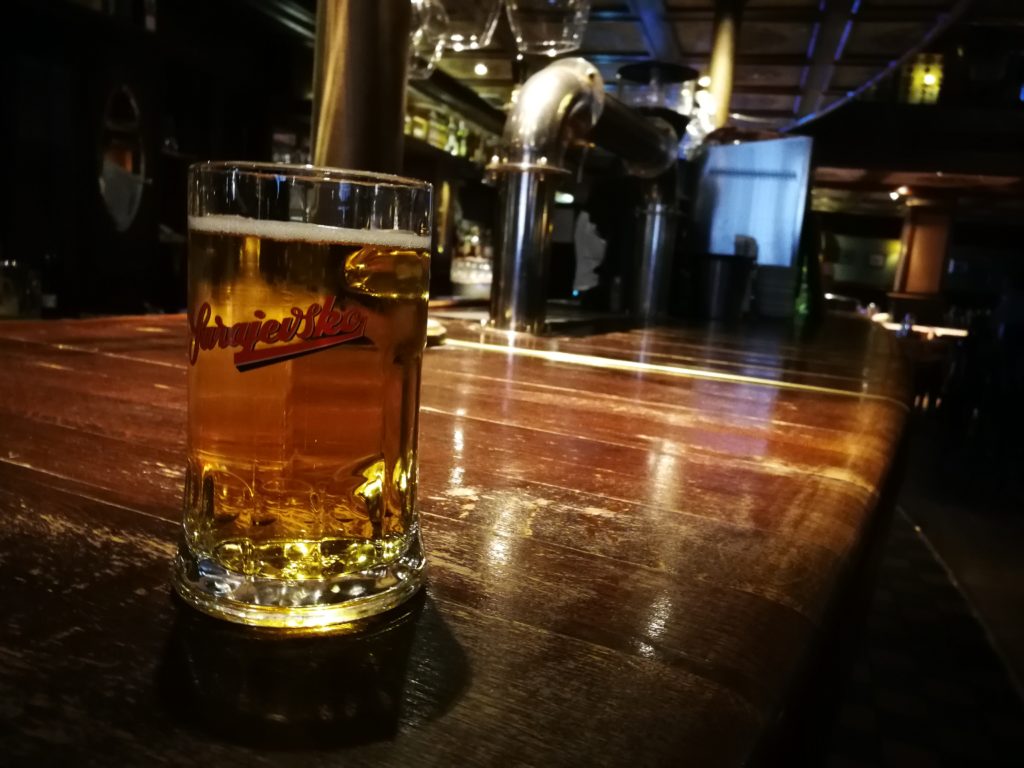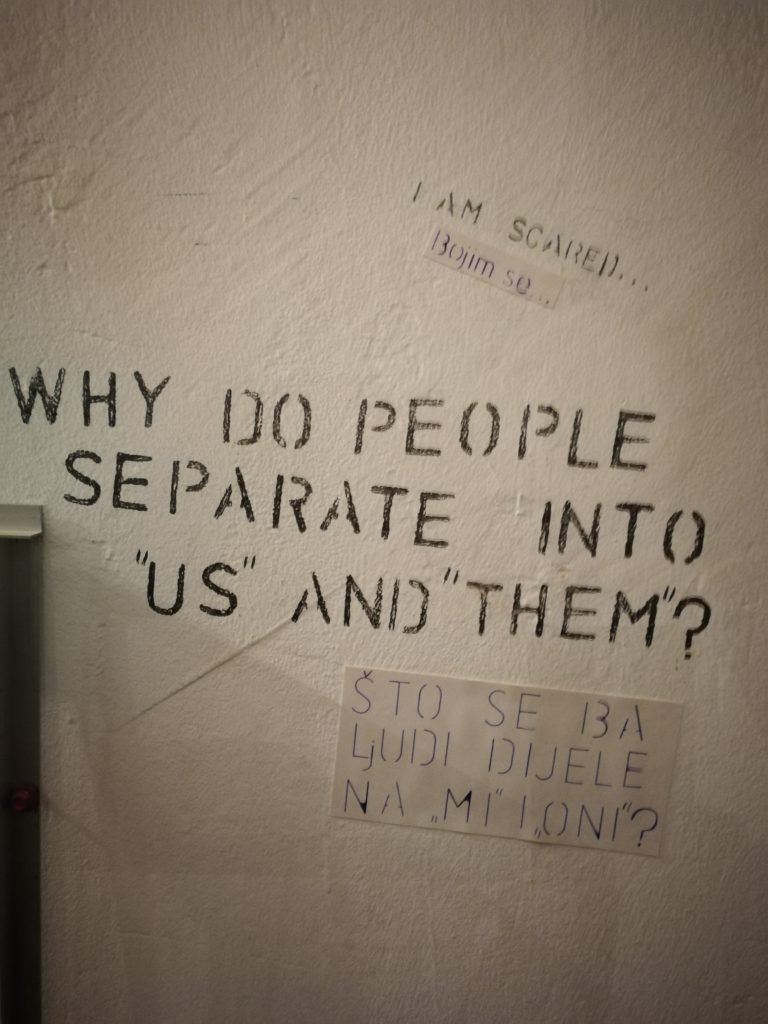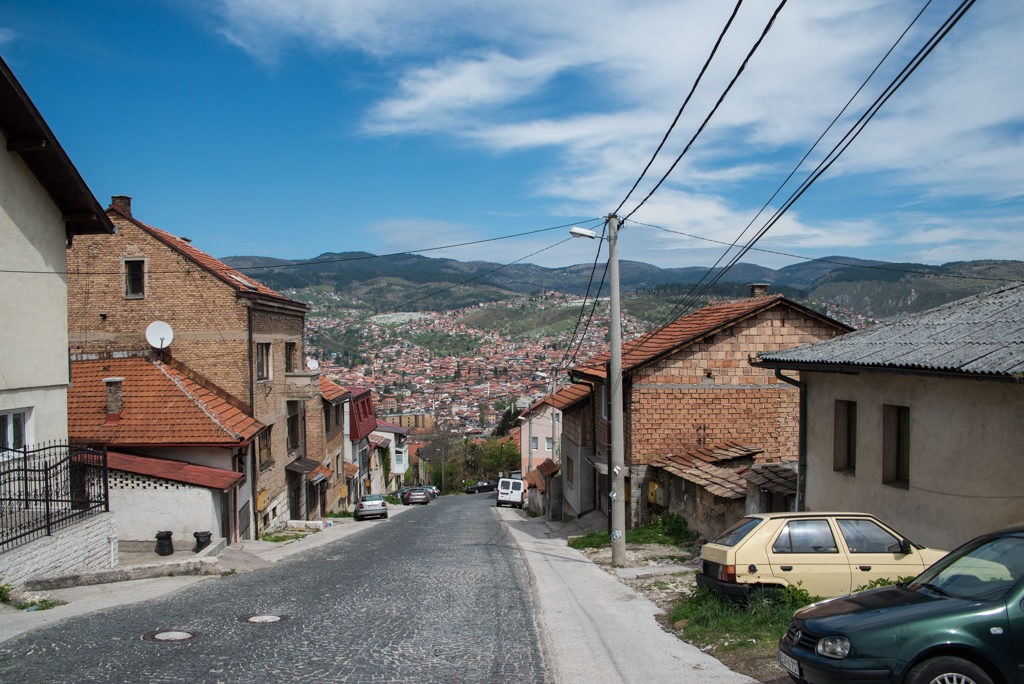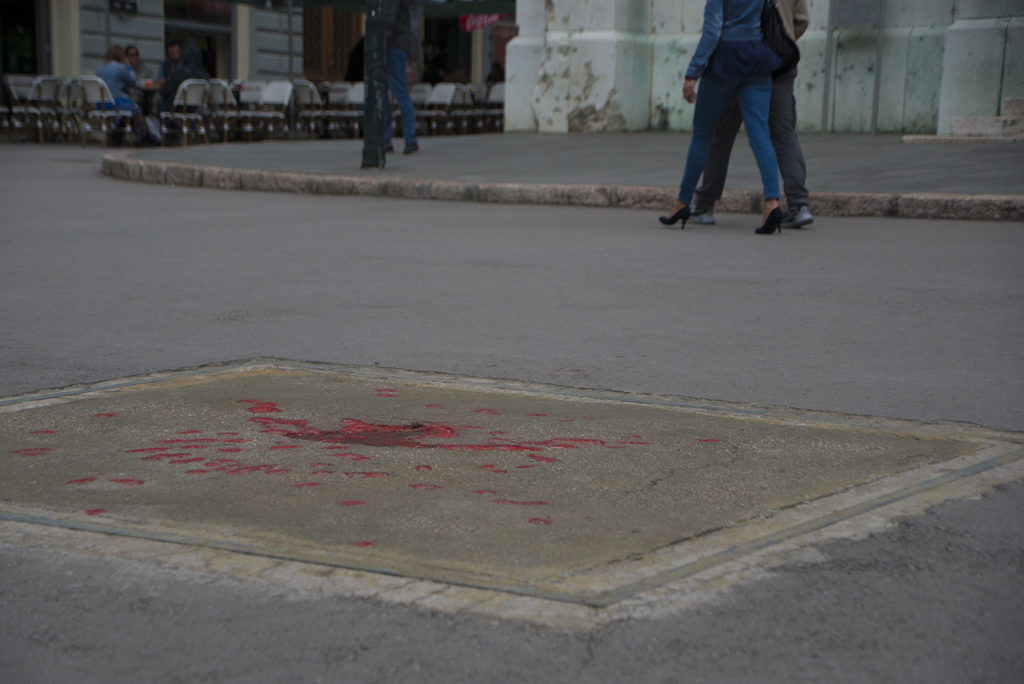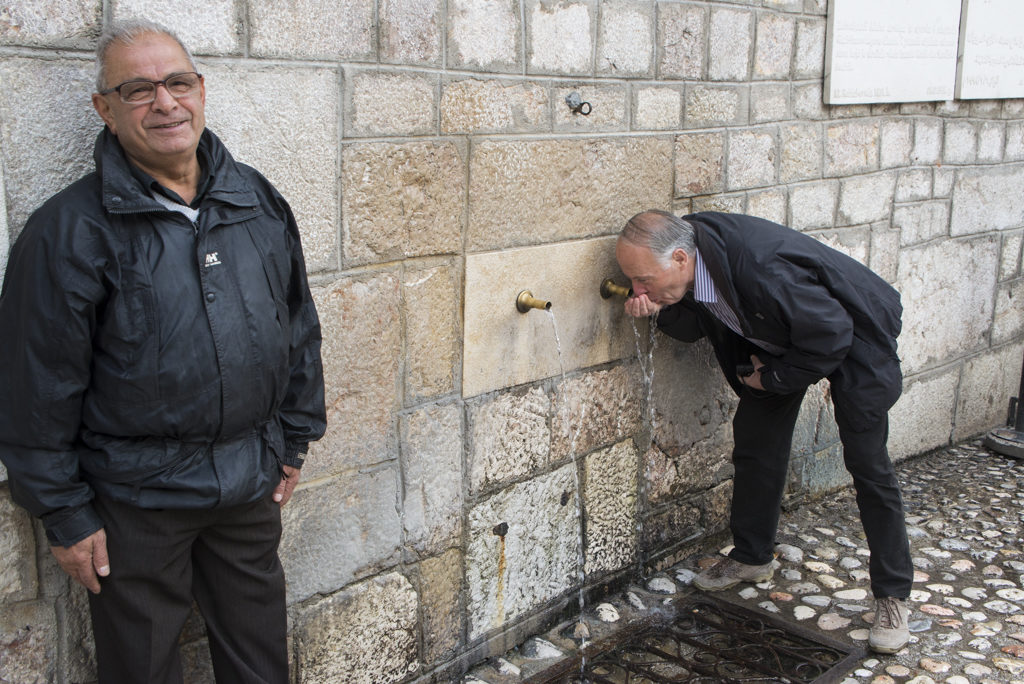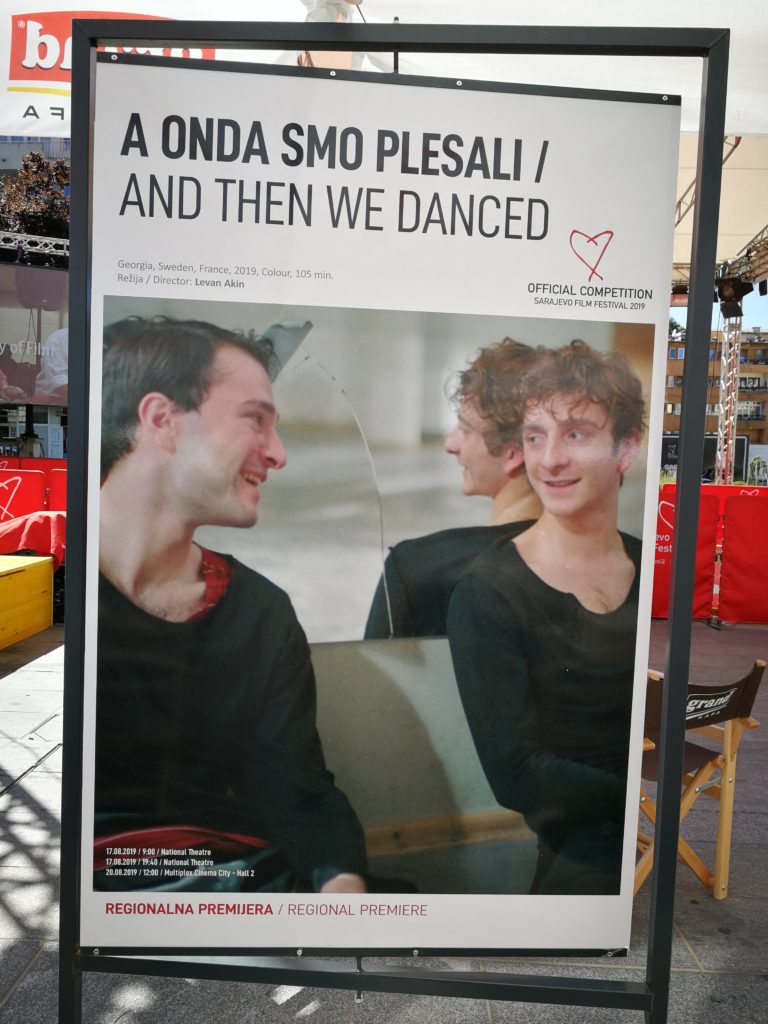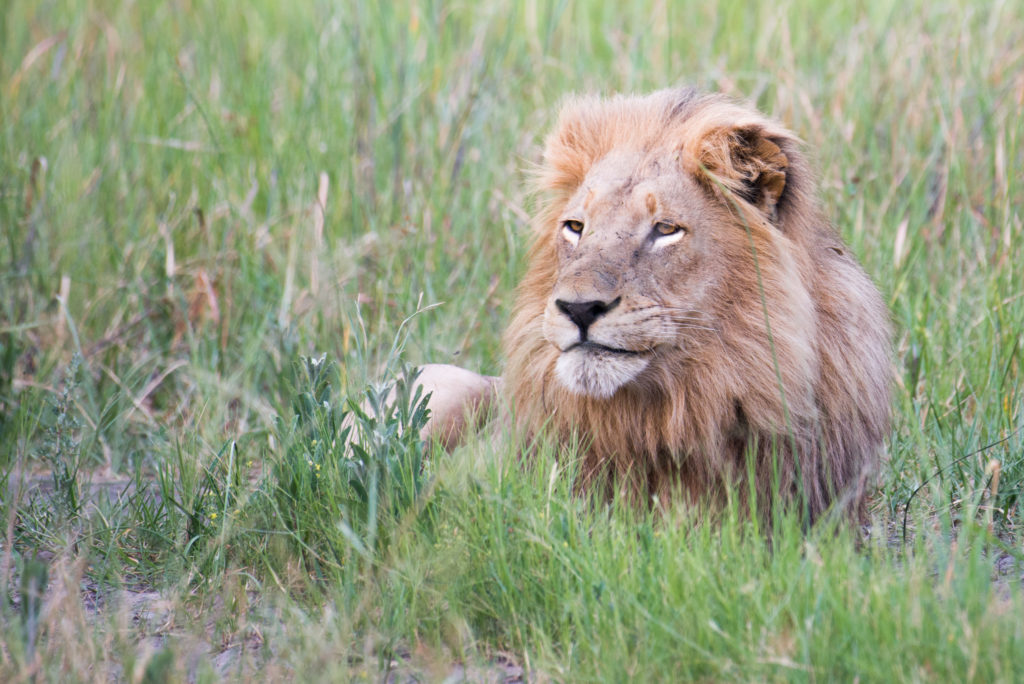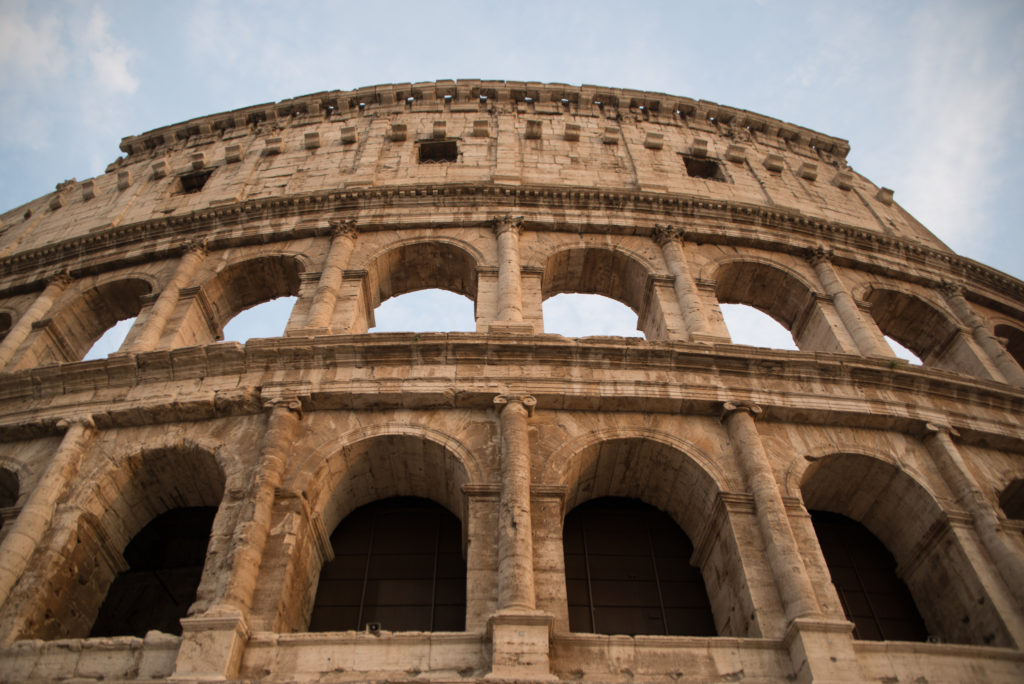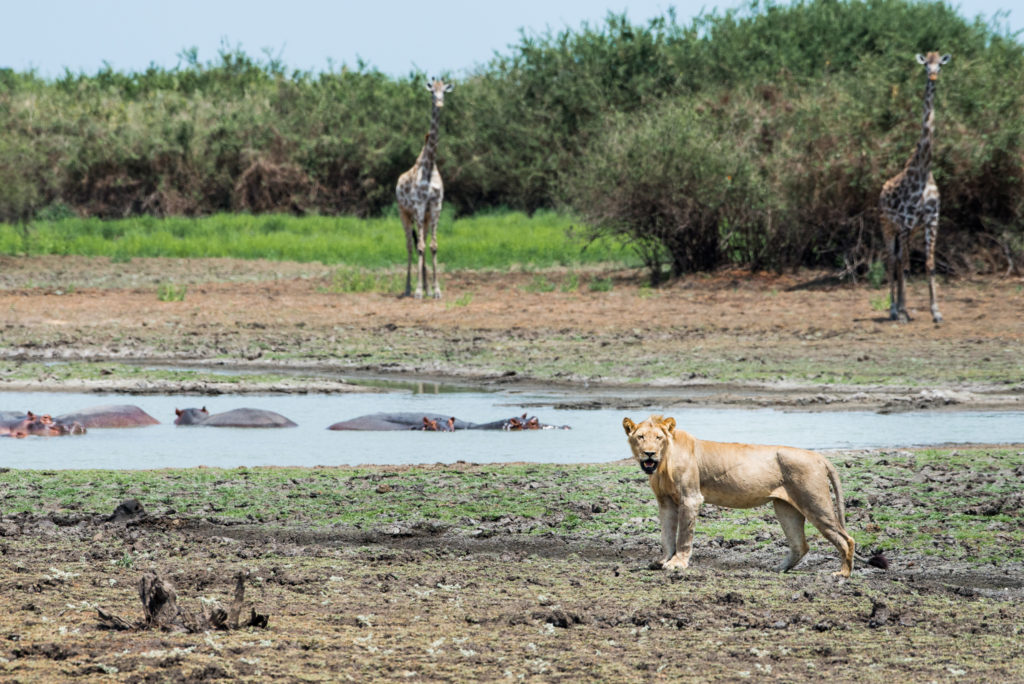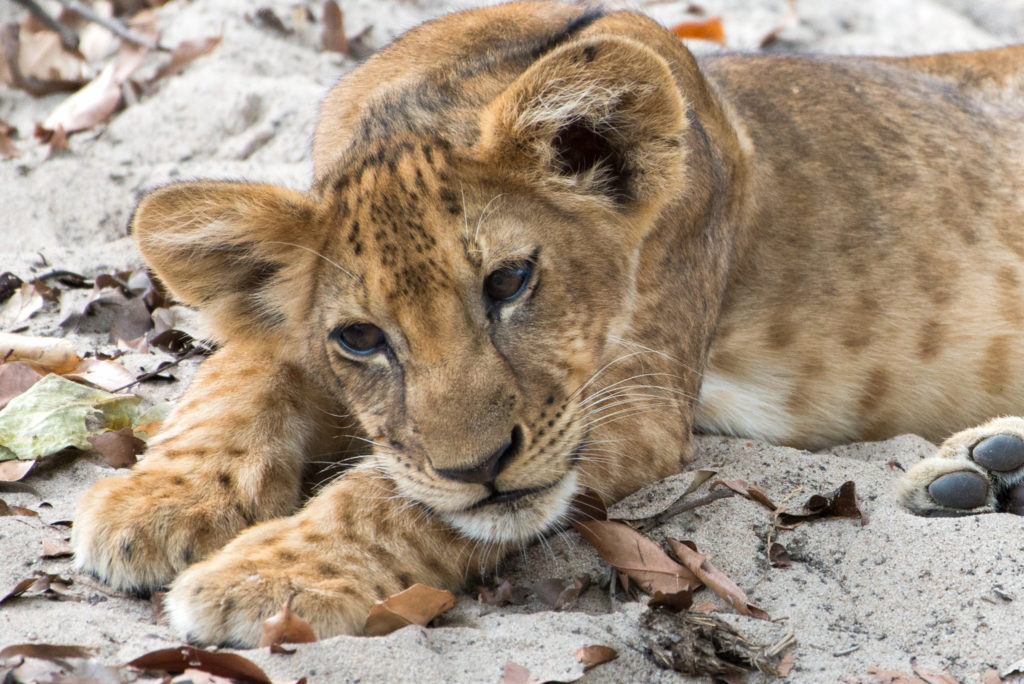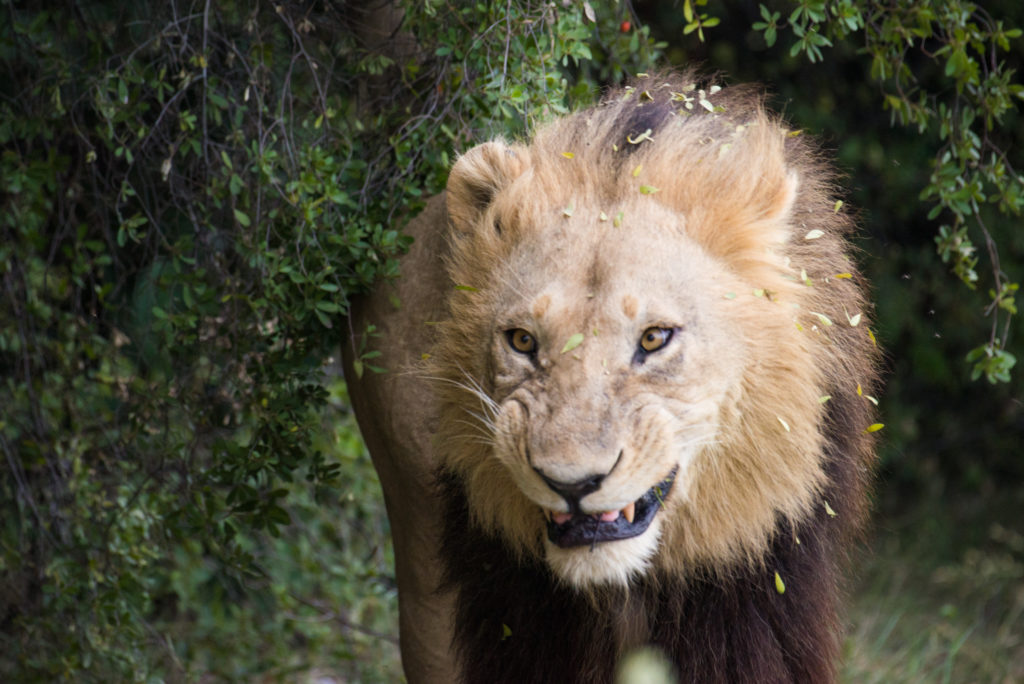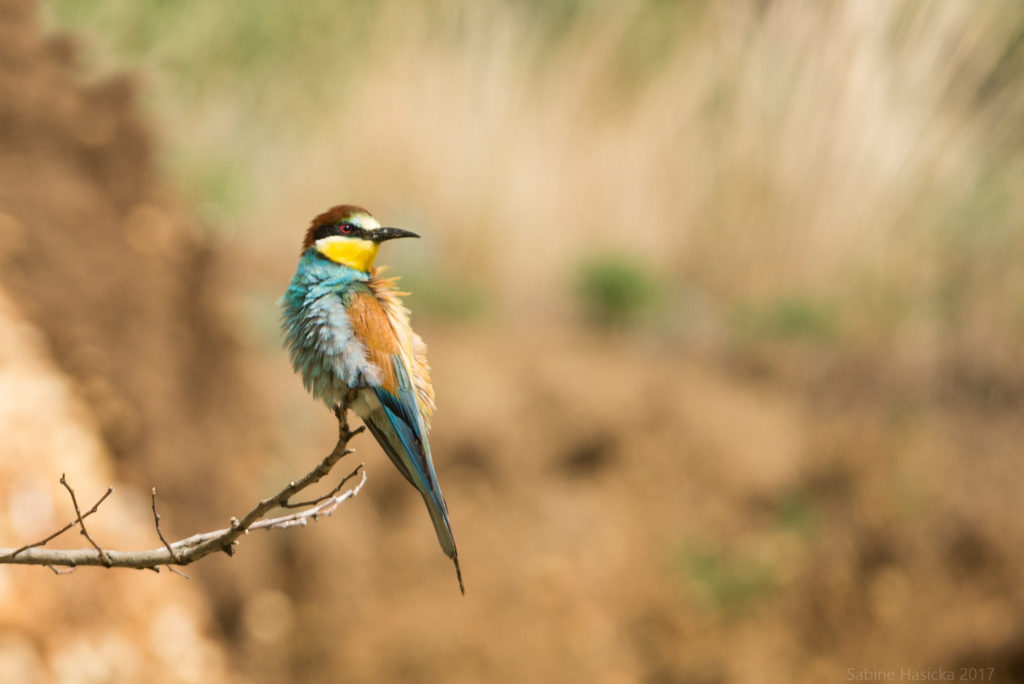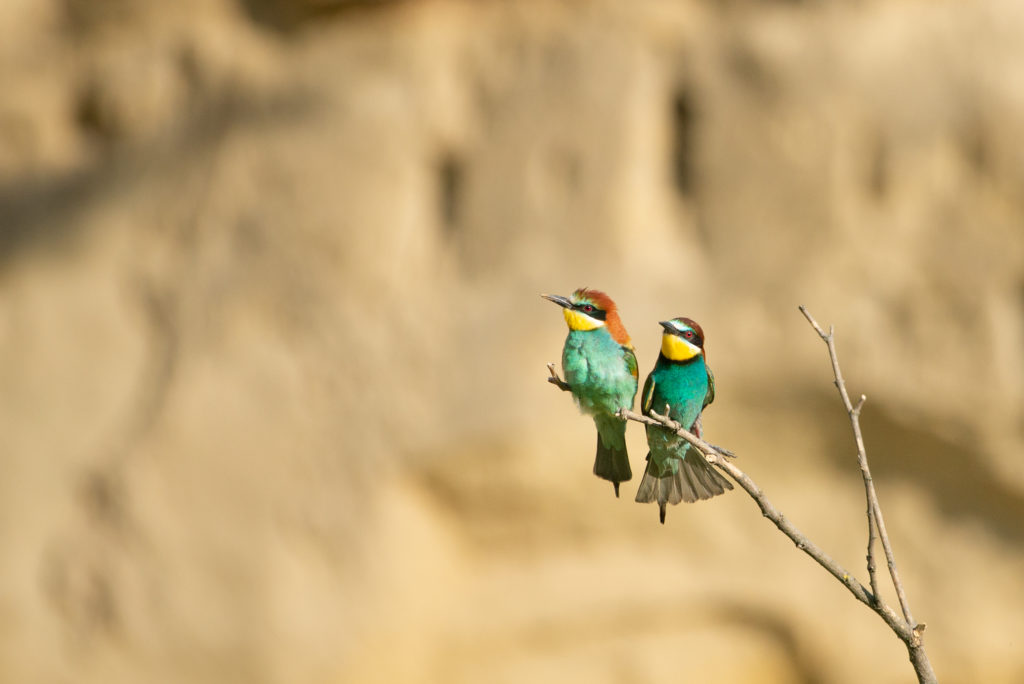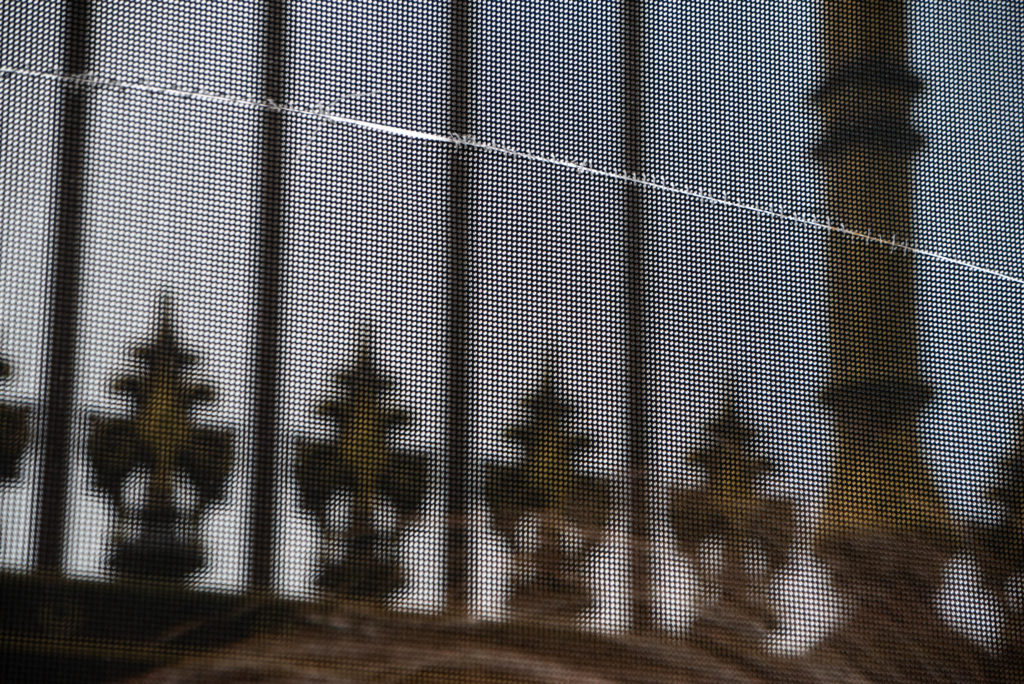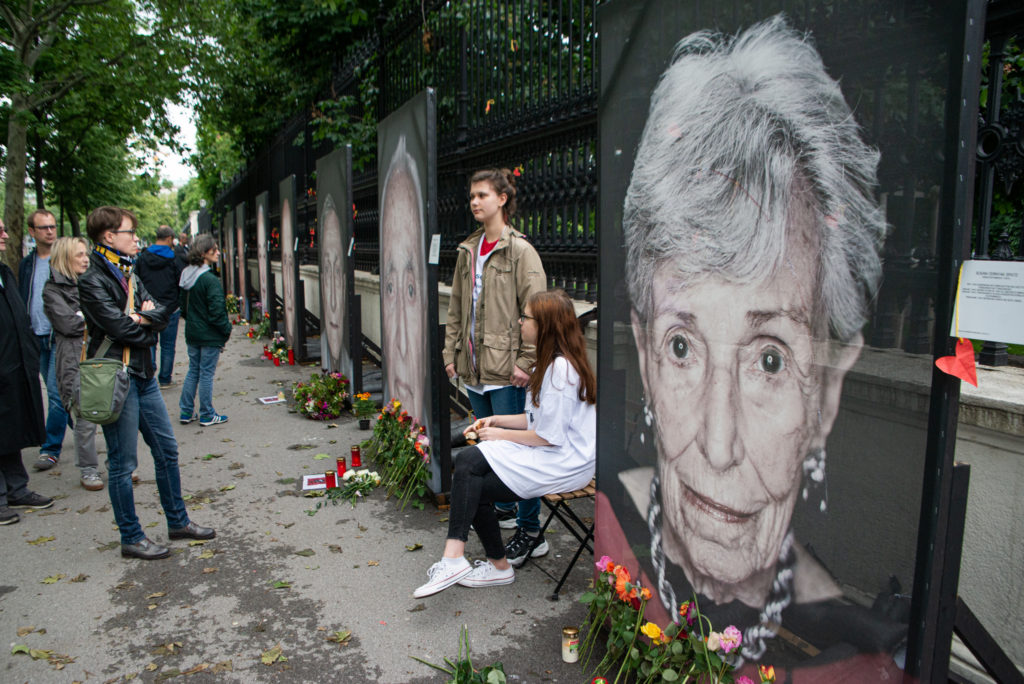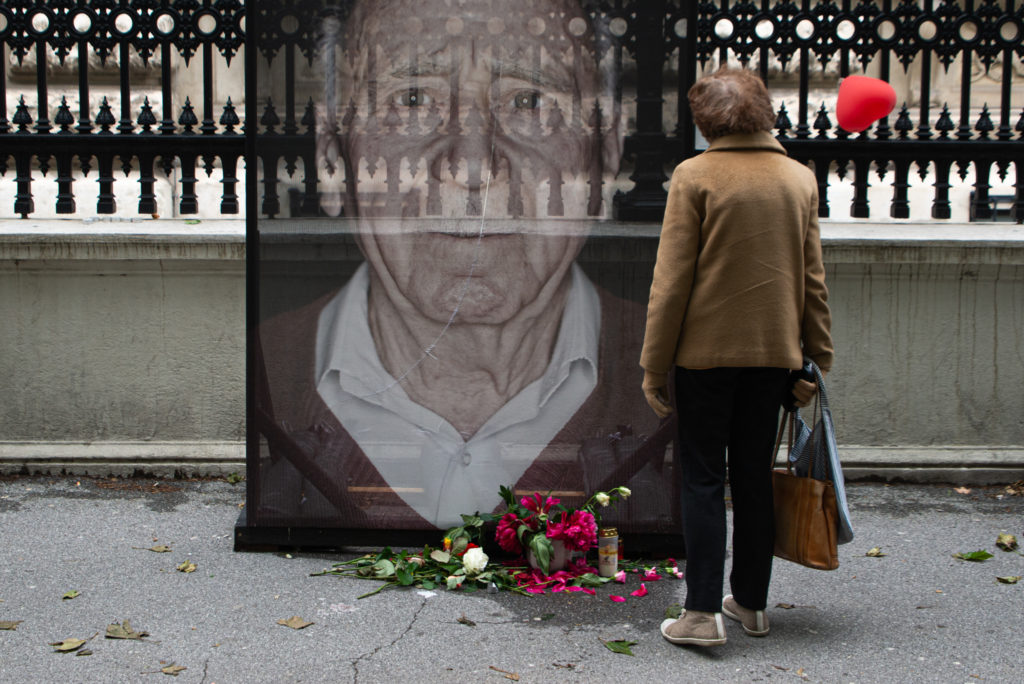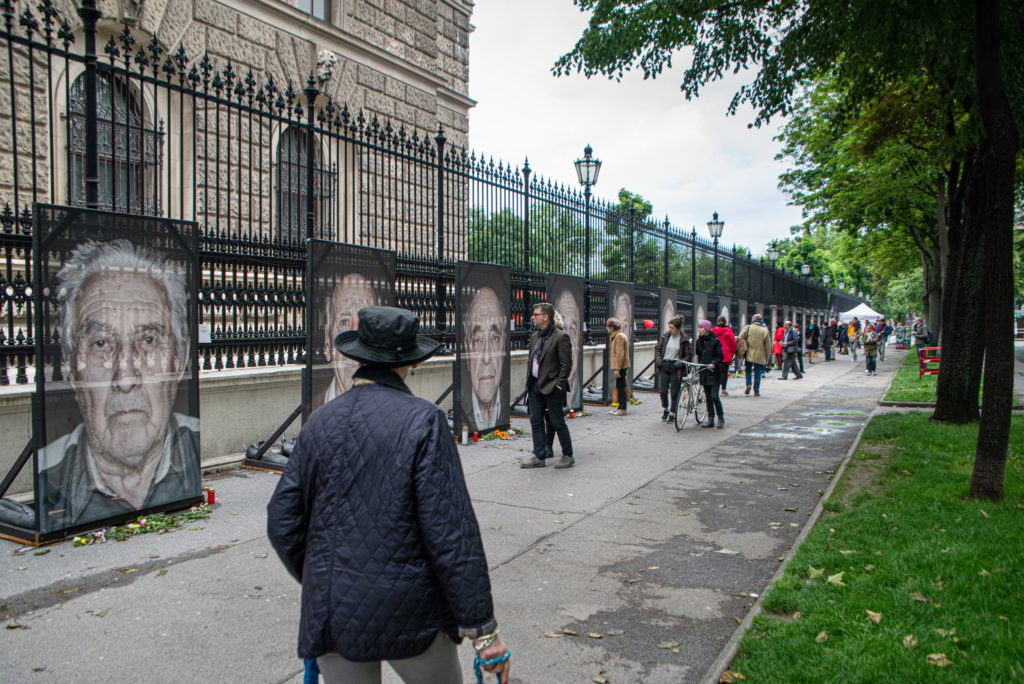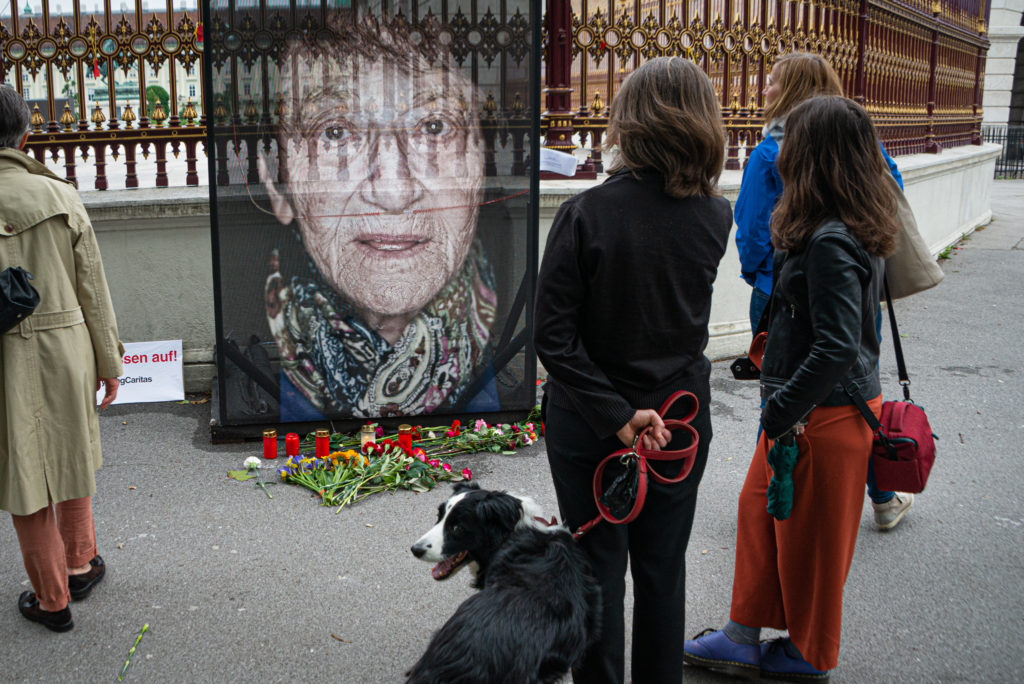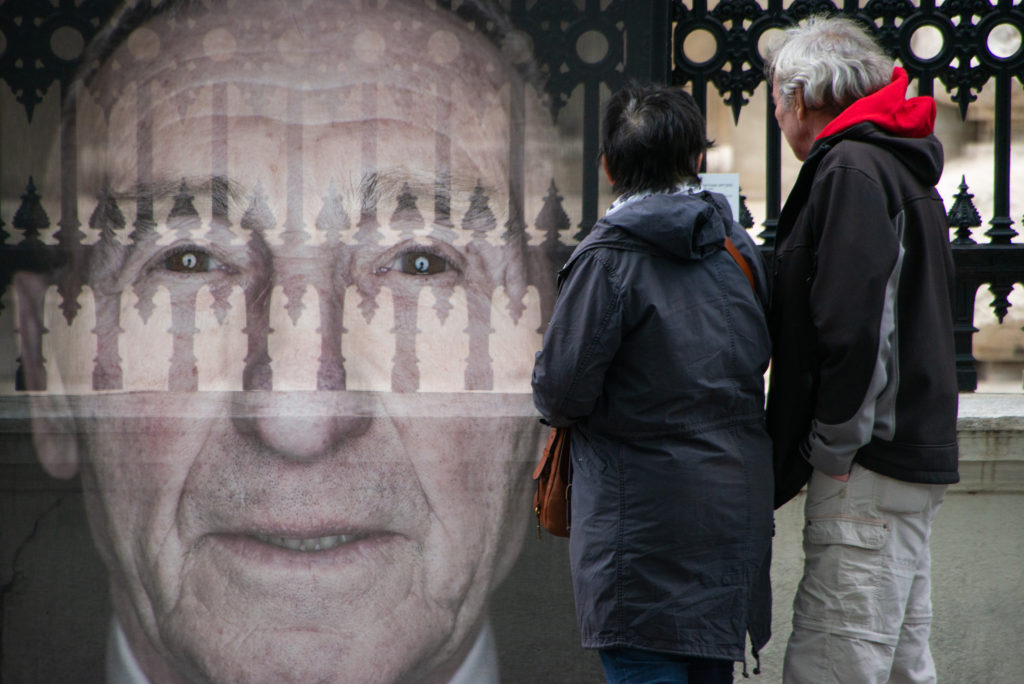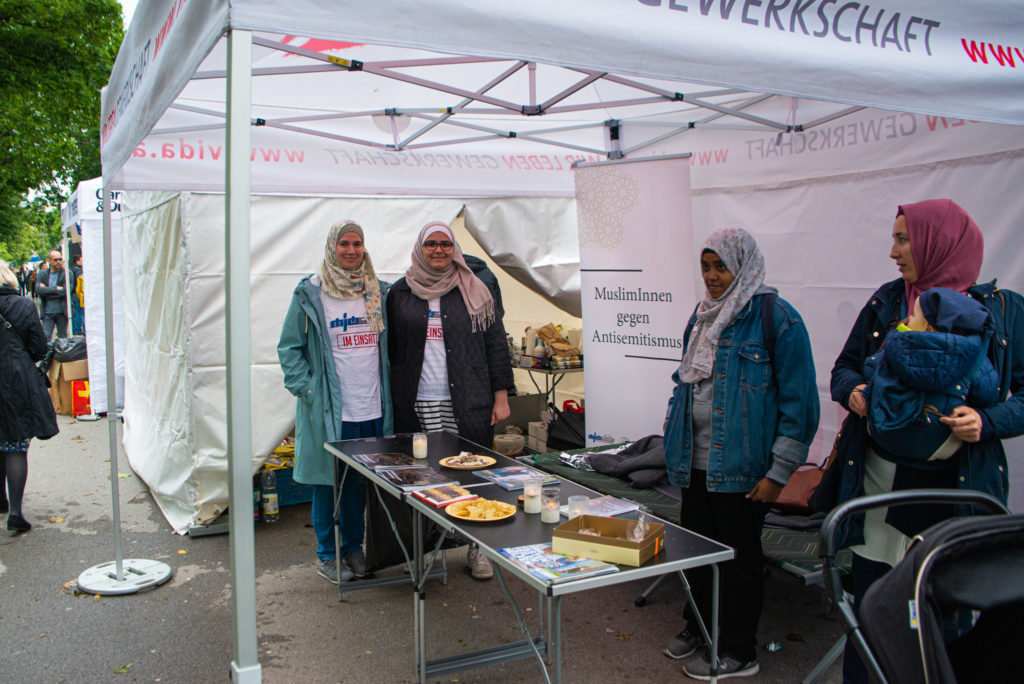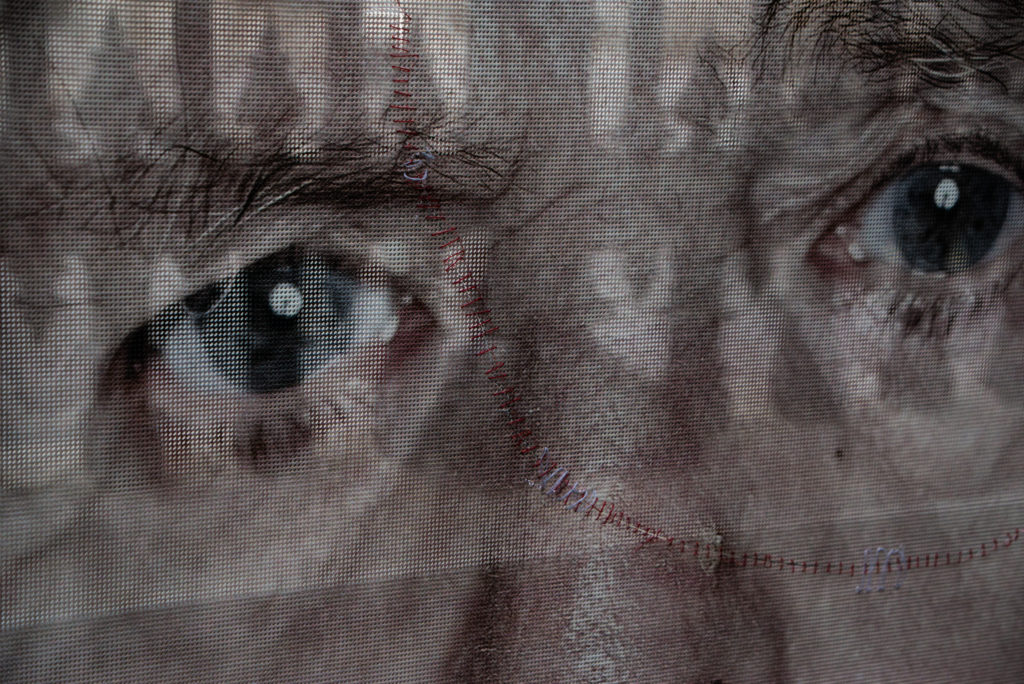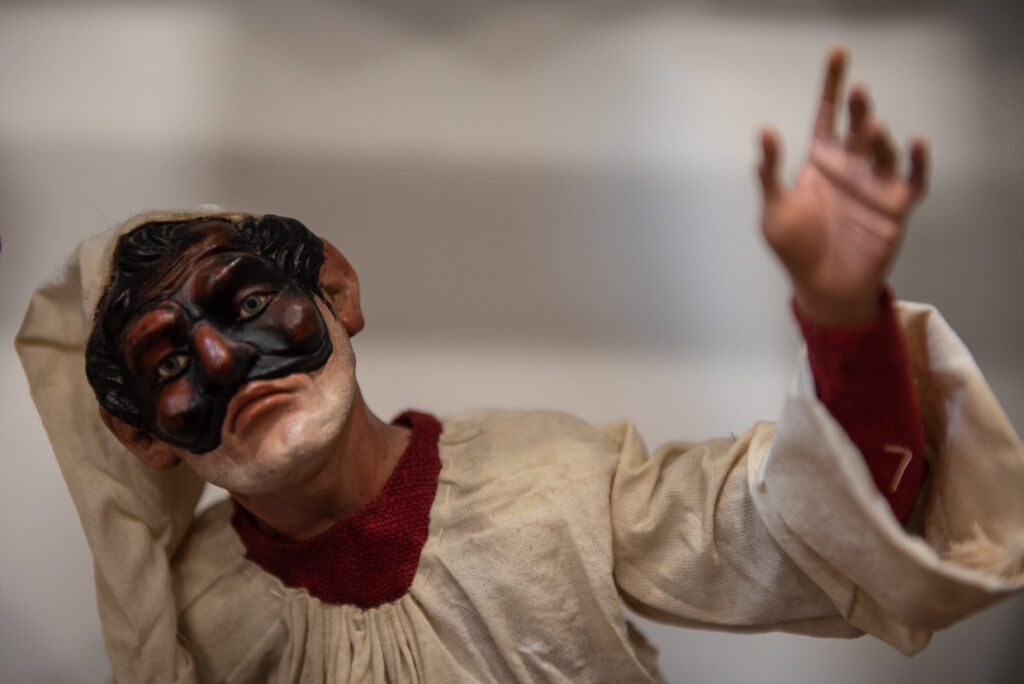
There’s a strange guy hanging out in the streets of Naples. A jokester with a big round belly, dressed in white with a cone-shaped sugar loaf hat. His face half hidden underneath a black, beaked mask, he splurges on Spaghetti and slurps red wine from the bottle. He waggles when he walks, like a nine month-pregnant woman, and when he sings, it’s with a screeching falsetto voice. He’s everywhere, depicted on posters and advertisements, modelled from lava stone or carved from wood by the puppet-makers in the old part of town. He is Pulcinella, the symbol and personification of Naples.
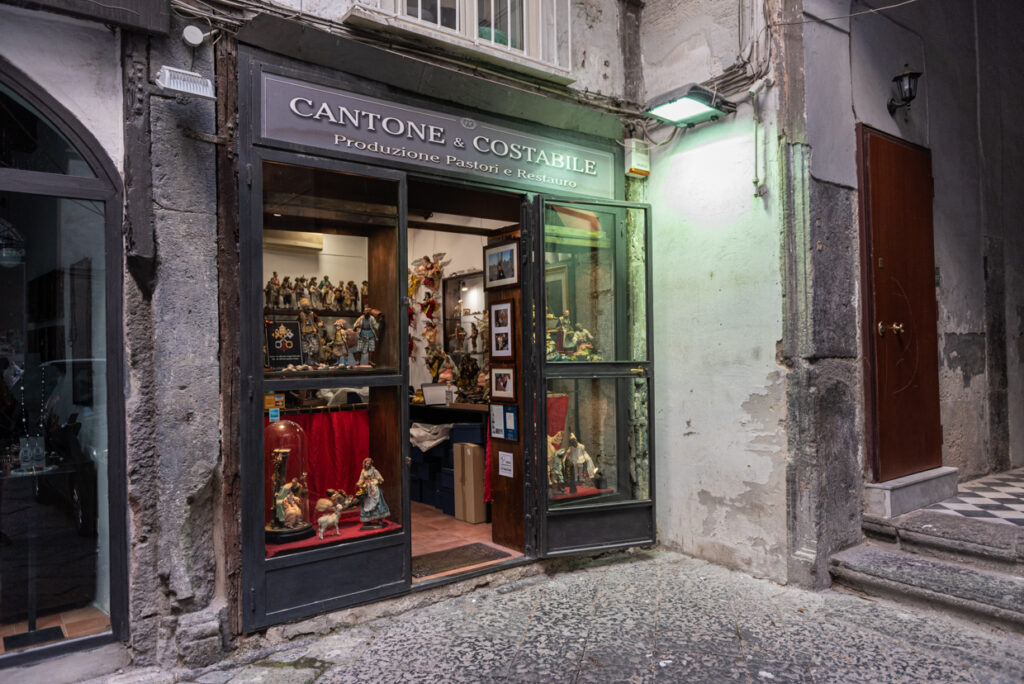
Pulcinella is both a peasant and an urbanite, both a stranger and a local. He’s clever and naïve, mischievous and loyal. Old but immortal, he’s both a woman and a man, both human and bird. In his unbound laughter lies sadness, behind his bird’s mask the unfaltering determination to face the troubles and the hard times. His eyes tell the story of oppression, of marginalisation, and prejudice.
As ungraspable as Pulcinella is, his life is well documented. In the 1797 book “Entertainment for Children” (Divertimento per Li Ragazzi) the late baroque painters father and son Tiepolo depicted the life of Pulcinella from his birth to beyond his many deaths:
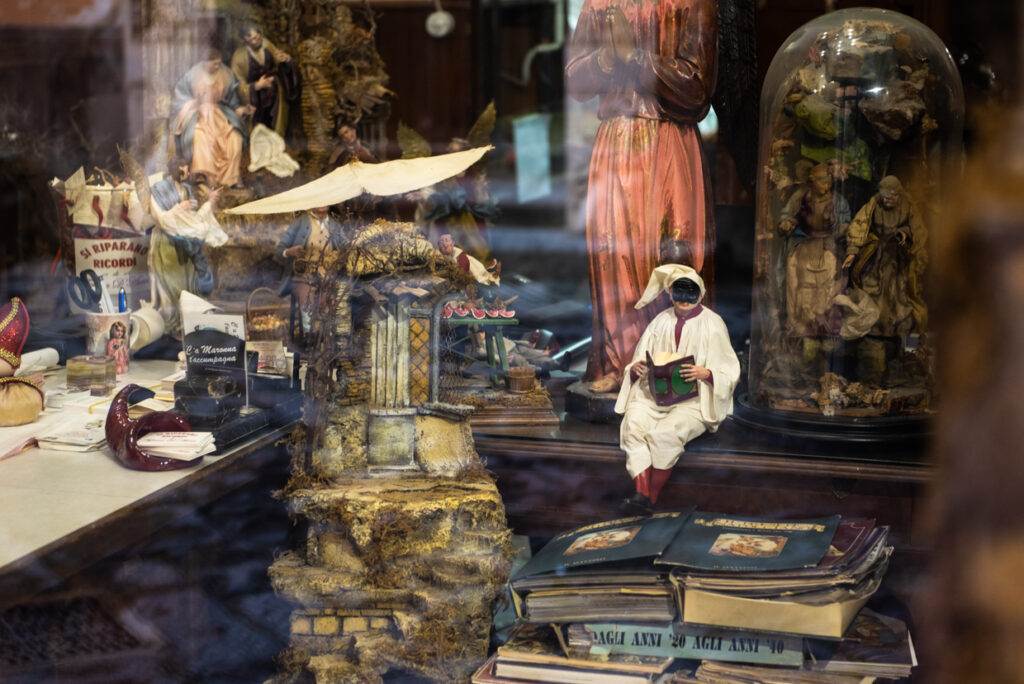
Pulcinella hatched from a giant egg. Legend has is that was an egg incidentally fertilized by the severed testicles cut off a young boy – his father trained the boy as a castrato, a falsetto singer, a wide spread art form in 16th and 17th century-Europe. Pulcinella’s birdlike nativity could well be a baroque version of the ancient Greek creation myth, which goes like this:
In the beginning, when there was nothing but empty darkness, there was but a bird with black wings named Nyx. With the wind, Nyx laid a golden egg and out of it rose Eros, the god of love. One half of the egg shell rose into the air and became the sky, the other one became the Earth. Then Eros made them fall in love.
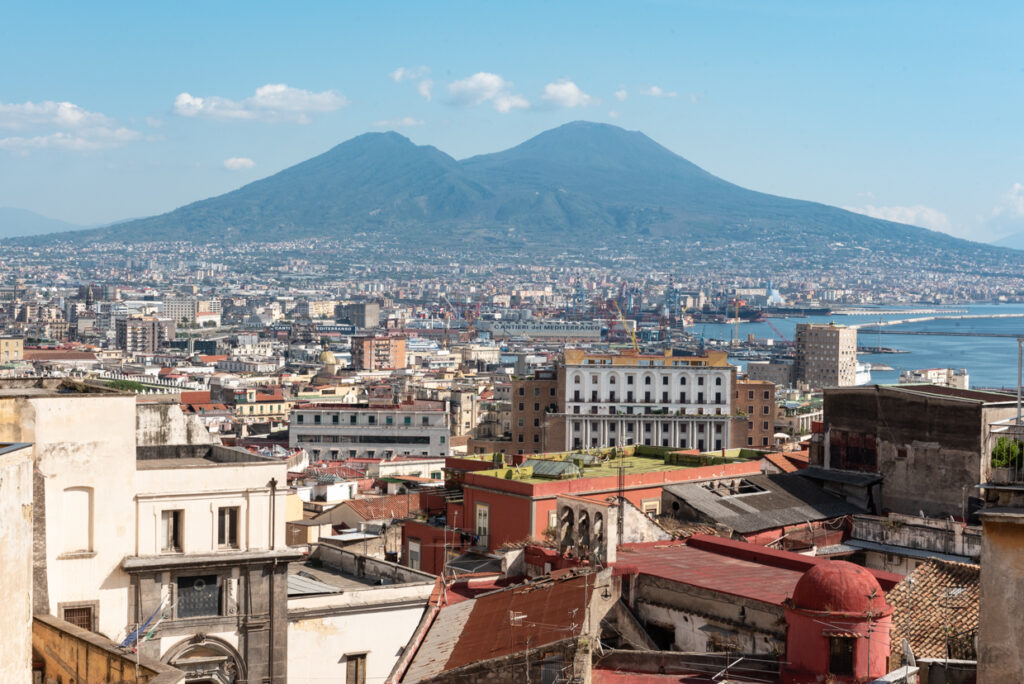
In the children’s book, Pulcinella was raised both on the countryside and in the city. He liked to play, and he loved to fly: Pulcinella can be seen swinging on a trapeze, and walking the tightrope. He’s playing shuttlecock, or Badminton, which was called volano back then – Italian for flying. An act, by the way, associated with falling in love.
Oh, how Pulcinella loved to play… To play, being free from restrictions and inhibition, an activity completely unproductive, but joyful, improvisational, and imaginative. Play, so psychology teaches us, is the basis of all civilisation, and so is Pulcinella most basically Neapolitan. Ludere is the Latin word for to play – and Pulcinella was playful and ludicrous, just like the city.

No wonder that high-flying Pulcinella fell in love, and married, and had many children. And of course he travelled the world and lived through many adventures. He worked as a barber, a carpenter, a tailor and an artist. He got arrested, imprisoned and pardoned. He fell ill, he died not one but many gruesome deaths and was resurrected.
In the story of Pulcinella it is impossible not to see the parallels with ancient myths as they were told in Ovid’s Metamorphosis – a book so fundamental to Greek and Roman culture – but also with the bible. Pulcinella has in fact been compared to Jesus, most notably by the French Enlightenment philosopher Denis Diderot. While likening Pulcinella to Jesus might not go down so well in radically catholic city like Naples, it is however save to say that Pulcinella speaks on a subconscious level, tells of the constant changing and transformation of life, and radiates the fascination and charisma of Jesus Christ.

Without doubt, Pulcinella is older than Naples. Pulcinella gave birth to Naples, he is Naples and everyone who has ever lived here.
While the myth is eternal, the figure Pulcinella is ascribed to a certain Silvio Fiorillo, an actor and playwright, who lived in the 17th century, when Naples suffered under the yoke of the Spanish empire, taxes were exorbitant. Fiorillo created a character with a rebel heart, a defiant servant by the name of Policinella, or Policenello, or Policiniela, or Pulcinello, or Pulcinella – depending on the edition and source. All names share a conspicuous resemblance to the Italian pulcino, chick.

Yet, Fiorillo, didn’t invent Pulicinella. Rather, he condensed many myths and lores of his times into this one secondary character in his book of 1632, La Lucilla Costante. Soon, cheeky Pulcinella became a favourite character of the Commedia dell’ Arte, the travelling theatre companies of baroque Italy.

The Commedia dell’Arte itself stems from ancient times, namely from the Oscan Plays. Oscan was the language of the native people who settled in what is nowadays called Campania and Basilicata, the instep of the Italian boot. Later, under the Greeks and Romans, these plays were called Atellean Commedies or Atellean Farces. These highly improvised plays, intermitted by song and dance, were not performed in amphitheatres, but entertained their audiences on marketplaces or town squares, little farces that dealt with everyday problems. The noise and bustle at these gatherings didn’t allow the spoken word to travel far, so the actors had to rely on body language and wore costumes and masks that accentuated their traits. These masks were well-defined stereotypes, such as the clownish Maccus, the gluttonous Buccus, or hump-backed Dossennus among others – characters who would later turn into the well-known and popular characters of the Commedia Dell’ Arte.
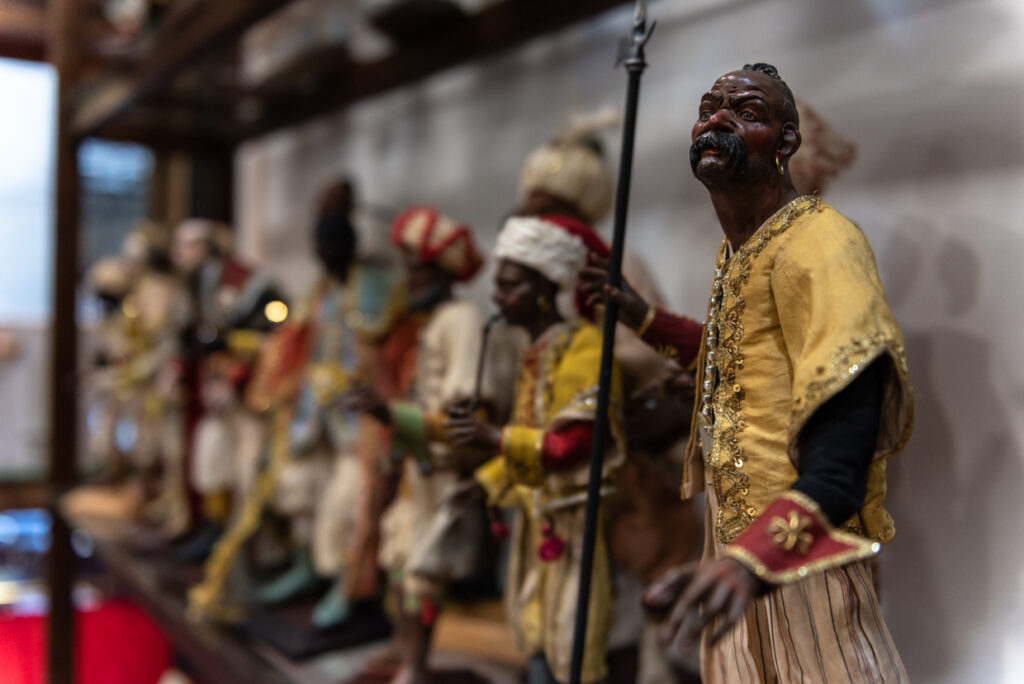
Probably blending the clown Maccus and the eternally hungry Buccus, Fiorillo dressed his Pulcinella in the loose white clothes that were associated with the people of Acerra, a little town not far from Naples. Acerra was known for frequent floodings and swamps which bestowed on the Acerrans Malaria , and bad odors. The little city had been founded in the early centuries AD by the Nasamoni, descendents of the dark-skinned soldiers from Northern Africa. The venerated black Saints and black Madonne of the region are still vestige of this early black Italian people. But Acerra was also known for its fertile soils and the Acerran produce: fresh fruit and vegetables sold by the Parulani, the grocers, in the big city, in Naples.
Today still, in the Neapolitan dialect, a Parulano is not only a green grocer, but a person who talks and behaves in a rustic manner, in every sense of the word. The phrase Parulano chi fa la Zeza, (Zeza meaning Lucretia, Pulcinella’s girl-friend) describes a very feminine man, and the Fare il Ballo di Parulano tellingly means cross-dressing, a man in woman’s clothes.

Pulcinella was at the peak of his fame at the end of the 18th century. In her heydays, the city of Naples was the biggest city of the world, the pulsating capital of the Kingdom of Naples, center of art and erudition. Artists, poets, musicians and scholars flocked to the city. The aristocracy indulged in games and gambling, and Pergolesi, the composer of spiritual music, wrote the Pulcinella suite.
But also, Italy was under attack by the French under Napoleon, the Enlightenment a veritable threat to the kingdoms and states on the Italian peninsula. A strategy of defence was needed, a figure of identification, of unification. A nation had to be created, and who better for the job than Pulcinella, who had hatched from an egg like Eros, resurrected like Jesus Christ? Someone who meant everything and embraced everyone.

Italy was unified in 1861, and Naples degraded to an insignificant city at the outskirts of Europe. The South soon became the poor and unloved sibling or the rich, industrial North, where cities like Milan and Turin garnered fame and money in fashion and automobile industry. Southern Italians were dubbed the “Africans of Italy”, and this was not meant as a compliment.
It must not be forgotten, that the original Pulcinella, was in fact in an immigrant, a person of color, shamed and ridiculed for their origins. A character who transcended myths and beliefs, gender and categorization, who turns struggle into game, hobble into dance, ridicule into laughter. A character just like Naples, a city whose pure mentioning evokes chaos, poverty, and gangsterism, a dance at the foot of a furious fire-spitting volcano. A city buried under ashes and resurrected. Old and immortal.
